
by Ria Olivier | Sep 30, 2021 | Antarctica, Data Management, Gough Island, Marion Island, Not-Assigned, Prince Edward Islands, Research, SA Agulhas II, SA Polar Infratsructure, SANAP, Science, Southern Ocean
 South African Polar Research Infrastructure (SAPRI): Launch of the Preparatory Phase
South African Polar Research Infrastructure (SAPRI): Launch of the Preparatory Phase

 The SAPRI team is pleased to inform you that the contractual agreement for the starting of the SAPRI implementation phase is being finalized between the Department of Science and Innovation (DSI) and National Research Foundation of South Africa (NRF). We have now entered the Preparatory Phase of SAPRI’s operationalisation and interim measures are being put in place to ensure progress is made. Until the formal signature of the contract, the SAPRI cannot officially initiate Phase 1, but in the interim the Preparatory Phase will continue the conceptual design of the RI and predispose priority actions with the support of the community.
The SAPRI team is pleased to inform you that the contractual agreement for the starting of the SAPRI implementation phase is being finalized between the Department of Science and Innovation (DSI) and National Research Foundation of South Africa (NRF). We have now entered the Preparatory Phase of SAPRI’s operationalisation and interim measures are being put in place to ensure progress is made. Until the formal signature of the contract, the SAPRI cannot officially initiate Phase 1, but in the interim the Preparatory Phase will continue the conceptual design of the RI and predispose priority actions with the support of the community.

 These achievements would not have been possible without the trust demonstrated by the scientific SANAP community towards the SAPRI team, the contribution and constructive support of the DFFE Oceans & Coasts Branch managing the SANAP logistics, and the commitment to collaborate offered by other institutions that have historically been involved in polar research. This gestation and birth of SAPRI is a major advancement to streamline, consolidate and grow the South African polar sciences, and represent a systemic innovation to maximize the investments of the various governmental institutions involved. The SAPRI will officially start from the advantageous position of being incubated within South African Environmental Observation Network (SAEON), which will fast-track the establishment of the governance and of the consortium agreements.
These achievements would not have been possible without the trust demonstrated by the scientific SANAP community towards the SAPRI team, the contribution and constructive support of the DFFE Oceans & Coasts Branch managing the SANAP logistics, and the commitment to collaborate offered by other institutions that have historically been involved in polar research. This gestation and birth of SAPRI is a major advancement to streamline, consolidate and grow the South African polar sciences, and represent a systemic innovation to maximize the investments of the various governmental institutions involved. The SAPRI will officially start from the advantageous position of being incubated within South African Environmental Observation Network (SAEON), which will fast-track the establishment of the governance and of the consortium agreements.
 The launch of the SAPRI Preparatory Phase was announced via a webinar and a Q&A session to illustrate the main aspects of SAPRI, its organization into integrated facilities, and the first steps of the implementation phase listed in the business plan. To accelerate the implementation phase, it is proposed to initiate an informal Preparatory Phase of SAPRI and to discuss the following actions with the community of stakeholders:
The launch of the SAPRI Preparatory Phase was announced via a webinar and a Q&A session to illustrate the main aspects of SAPRI, its organization into integrated facilities, and the first steps of the implementation phase listed in the business plan. To accelerate the implementation phase, it is proposed to initiate an informal Preparatory Phase of SAPRI and to discuss the following actions with the community of stakeholders:
- Establishment of the User Fora overseeing the requirements of the integrated facilities.
- Implementation of the Task Team for the reorganization of SANAP within the NRF.
- Consultation and discussion on the implementation steps for the Polar Science Transformation Plan.
- Establishment of the DFFE-SAPRI Task Team for assisting with science-related logistics. This will include discussions around the SA Agulhas II dry dock scheduled for November 2021.
 The virtual webinar took place on 29th September 13:00-15:00 and was led by the SAPRI team; Tamaryn Morris, Marcello Vichi, Juliet Hermes, Johannes Pauw.
The virtual webinar took place on 29th September 13:00-15:00 and was led by the SAPRI team; Tamaryn Morris, Marcello Vichi, Juliet Hermes, Johannes Pauw.
- Overview of SAPRI
- Current status, Business Plan priorities, budget requirements and transformation actions
- Q&A
- Preparatory phase
The following links are available to the Antarctic Legacy of South Africa Archive of the webinar recordings and presentations of the South African Polar Research Infrastructure (SAPRI): launch of the Preparatory Phase:
IMPORTANT documents related to and to be read together with SAPRI proposal available on ALSA archive:

by Ria Olivier | Aug 27, 2021 | Environment, Marine Protected Area, Marion Island, Mice Eradication, Research, SANAP, Science

Ecosystem processes are changing worldwide, especially with the impacts of invasive species being exacerbated by climate change.  This is particularly obvious in the Southern Ocean where a warmer and dryer environment allows the proliferation of species once limited by the cold climate. South African Special Nature Reserve, Marion Island is no exception. A recent proliferation of invasive House Mouse attacks on endangered breeding seabirds suggests a profound alteration of the natural ecosystem. This has led to the planned eradication of mice at Marion Island in winter 2023.
This is particularly obvious in the Southern Ocean where a warmer and dryer environment allows the proliferation of species once limited by the cold climate. South African Special Nature Reserve, Marion Island is no exception. A recent proliferation of invasive House Mouse attacks on endangered breeding seabirds suggests a profound alteration of the natural ecosystem. This has led to the planned eradication of mice at Marion Island in winter 2023.

 For the next three years, the new SANAP project co-led by Dr Maëlle Connan (Research Fellow in the Marine Apex Predator Research Unit, Nelson Mandela University) and Prof. Peter Ryan (director of the FitzPatrick Institute of African Ornithology – University of Cape Town) will focus on three data deficient species of avian scavengers: Black-faced Sheathbill, Kelp Gull and Brown Skua.
For the next three years, the new SANAP project co-led by Dr Maëlle Connan (Research Fellow in the Marine Apex Predator Research Unit, Nelson Mandela University) and Prof. Peter Ryan (director of the FitzPatrick Institute of African Ornithology – University of Cape Town) will focus on three data deficient species of avian scavengers: Black-faced Sheathbill, Kelp Gull and Brown Skua.
By focusing on these three species and some of their prey, the project intends first to fill identified scientific gaps that are crucial for best planning of the mouse eradication. Second, these three scavengers will be used as indicators of recovery of the terrestrial ecosystem post-eradication by establishing baselines for the scavenger guild and their prey against which the impact of a successful mouse eradication can be measured in years to come. (Above: Left – Maelle Connan, Right – Peter Ryan)

 (Above l-r: Sub-Antarctic Skua, Black-Faced Sheathbill)
(Above l-r: Sub-Antarctic Skua, Black-Faced Sheathbill)

(Above: Eleanor Weideman on Marion Island)
An important aspect of the project will entail conducting regular censuses and seasonal round island counts in addition to behavioural observations of the focal scavenger species. Indeed, the three species to be studied are at the top of the terrestrial food chain, and thus can be used as indicators of recovery of the island biota post-eradication.
 On one hand, Black-faced Sheathbills and Kelp Gulls used to predate on terrestrial invertebrates, at least seasonally, but this behaviour has decreased in sheathbills as invertebrate populations have collapsed through mouse predation. There are no recent data for Kelp Gulls. On the other hand, many pairs of Brown Skuas predate mainly on burrowing petrels, thus will inform on the recovery of these nocturnal species from mouse predation. The skua data will be complemented by the implementation of an automated acoustic monitoring to detect the presence and coarse distribution of the most elusive and cryptic nocturnal species which are notoriously difficult to study. (Left – Eleanor Weideman in the field on Marion Island.)
On one hand, Black-faced Sheathbills and Kelp Gulls used to predate on terrestrial invertebrates, at least seasonally, but this behaviour has decreased in sheathbills as invertebrate populations have collapsed through mouse predation. There are no recent data for Kelp Gulls. On the other hand, many pairs of Brown Skuas predate mainly on burrowing petrels, thus will inform on the recovery of these nocturnal species from mouse predation. The skua data will be complemented by the implementation of an automated acoustic monitoring to detect the presence and coarse distribution of the most elusive and cryptic nocturnal species which are notoriously difficult to study. (Left – Eleanor Weideman in the field on Marion Island.)
Data obtained during the project will be swiftly shared to the Mouse-Free Marion programme manager Dr Anton Wolfaardt, to ensure updated information is available for the best planning of the mouse eradication.
 Cover Image: Sub-Antarctic Skua – photo credit: Maelle Connan
Cover Image: Sub-Antarctic Skua – photo credit: Maelle Connan
Text supplied by Maelle Connan.
Photo Credits: Maelle Connan, Yinhla Shihlomuhe, Isabel Micklem.

by Ria Olivier | Aug 25, 2021 | Antarctica, Research, Science, Southern Ocean
Predictive computational models of Antarctic sea ice through metocean thermodynamics are used to determine sea ice extent and break up. These models are also used for input into climate models and for analysis of the effects upon ships and offshore structures (Feltham, 2008).


(Above: left picture: Miss R. Audh, Mr B. Hall and Mr Omatuku Ngongo. Right picture: Dr T. Rampai)
However, these models need to be able to account not just for the thermodynamic fluxes occurring within the sea ice and ocean, but also the dynamic effects on the ice and its resultant fracture mechanics (Rampal et al., 2011). At present, there is a lack of data for the mechanical properties of sea ice within the Marginal Ice Zone (MIZ), which means it is not possible to calibrate and verify computational models. Sea ice physical and mechanical properties vary greatly due to the meteorological and oceanic conditions experienced, as well as with time (Cox et al., 1984; Petrich and Eicken, 2010).
 (Above left to right: temperature-depth profiles with time data of artificially grown sea ice, crystal structure of artificially grown sea ice, comparison of the Elastic Modulus of different types of sea ice)
(Above left to right: temperature-depth profiles with time data of artificially grown sea ice, crystal structure of artificially grown sea ice, comparison of the Elastic Modulus of different types of sea ice)
The physical properties such as grain structure, temperature, salinity and brine volume results all affect the measured mechanical properties such as compressive strength, failure envelope, Elastic Modulus and Poisson’s ratio.
 (Above: left picture (UCT MARiS Mobile polar lab), Middle picture (Miss B. Matlakala and Mr F. Guni doing artificial sea ice experiments), Right Picture (Compression machine for testing mechanical properties of sea ice).
(Above: left picture (UCT MARiS Mobile polar lab), Middle picture (Miss B. Matlakala and Mr F. Guni doing artificial sea ice experiments), Right Picture (Compression machine for testing mechanical properties of sea ice).
The unique contribution from a materials engineering approach is: 1. performing lab-based experiments to calibrate/test the designed equipment’s’ suitability for the intended research. 2. the equipment are used to investigate sea ice dynamics in a controlled and isolated approach (understand the influences of different variables on sea ice properties). This will be done with the designed inhouse to make artificial sea ice. 4. use designed equipment to test the relevant sea ice properties in situ.
 (Above left to right: Dr Tokoloho Rampai and A/Prof Marcello Vichi) Dr Tokoloho Rampai (chemical engineering department) is the principal investigator on the project, with the co-investigator A/Prof Marcello Vichi from the department of Oceanography.
(Above left to right: Dr Tokoloho Rampai and A/Prof Marcello Vichi) Dr Tokoloho Rampai (chemical engineering department) is the principal investigator on the project, with the co-investigator A/Prof Marcello Vichi from the department of Oceanography.

 The project is facilitated through the MARiS interdisciplinary centre and hosted by the Chemical Engineering Department at the University of Cape Town. MARiS (Marine and Antarctic Research for Innovation and Sustainability) is the new interdisciplinary center for Marine and Antarctic Science projects, involving multiple departments within the University of Cape. The centre is an aggregator of competence and expertise that considers academic and technological knowledge in relation to societal benefits, with the overarching aim of enhancing the production of knowledge and human capacity in marine and Antarctic research. The center strives to develop technological and innovative solutions to interdisciplinary marine problems and for extreme conditions like the polar environment. Furthermore, to promote and maintain post-graduate training, including interdisciplinary curricula. For more information about the center, please click here, or visit maris.uct.ac.za.
The project is facilitated through the MARiS interdisciplinary centre and hosted by the Chemical Engineering Department at the University of Cape Town. MARiS (Marine and Antarctic Research for Innovation and Sustainability) is the new interdisciplinary center for Marine and Antarctic Science projects, involving multiple departments within the University of Cape. The centre is an aggregator of competence and expertise that considers academic and technological knowledge in relation to societal benefits, with the overarching aim of enhancing the production of knowledge and human capacity in marine and Antarctic research. The center strives to develop technological and innovative solutions to interdisciplinary marine problems and for extreme conditions like the polar environment. Furthermore, to promote and maintain post-graduate training, including interdisciplinary curricula. For more information about the center, please click here, or visit maris.uct.ac.za.
Text and Images: Tokoloho Rampai

by Ria Olivier | Aug 12, 2021 | Marion Island, Research, Science
A few hundred million years after the big bang, the first stars in the universe were born during a period known as “cosmic dawn.”
This epoch is uncharted territory: the first and only tentative detection of cosmic dawn was reported in 2018, thus opening a new window into the universe’s past that is ripe for new discoveries.
 Telescopes aiming to study cosmic dawn must observe at radio frequencies (<150 MHz). These frequencies are exceptionally difficult to measure because of contamination from terrestrial radio-frequency interference and ionospheric effects.
Telescopes aiming to study cosmic dawn must observe at radio frequencies (<150 MHz). These frequencies are exceptionally difficult to measure because of contamination from terrestrial radio-frequency interference and ionospheric effects.
Our team has demonstrated that Marion Island truly offers a South African geographic advantage for low-frequency radio astronomy. The radio-quiet environment of Marion is unparalleled, surpassing even the Karoo desert, which is one of the premier radio observatory sites and the future location of the Square Kilometre Array (SKA). With its clean observing conditions, Marion Island gives a unique opportunity to deliver high impact science that is impossible to conduct anywhere else in the world.

Radio astronomy experiment (ALBATROS) on Marion Island.
The project has installed two radio astronomy experiments on Marion Island. The first, named PRIZM, is searching for the signal from cosmic dawn and has been operating for three years. We are continuing these observations, coupled with instrument upgrades and rigorous calibration campaigns in order to obtain a robust detection. The second experiment, ALBATROS (above), is a companion project that aims to image the radio sky at <30 MHz, improving upon the resolution of current results by a factor of 20-30.
We have proven the technology with a few pathfinder antennas, and we are building and installing additional antennas to complete the full ALBATROS array. Our work is well timed to take advantage of the current solar minimum. The reduced ionospheric activity may allow us to probe the sky at particularly low observational frequencies that are otherwise difficult or impossible to access.
Prof Kavilan Moodley is the Principal Investigator on the project hosted at The Astrophysics Research Centre (ARC) at the University of KwaZulu-Natal (UKZN). The Astrophysics Research Centre (ARC) is part of the College of Agriculture, Engineering and Science at UKZN. We strive to be a world-class centre of excellence for research and postgraduate training in astrophysics and related data-intensive science.
The management of the project is done by Prof. H. Cynthia Chiang and Prof. Jonathan Sievers.
Read here more about the project.
Text and Images by Prof Cynthia Chiang, 12 August 2021.

by Ria Olivier | Aug 11, 2021 | Antarctica, Research, SA Agulhas II, SANAP, Science
 Industry 4.0 is the digital transformation of global industry. Digital twins pose to disrupt conventional business as they harness real-time data alongside a digitized representation of the state and behaviour of real assets to offer decision support. Sound and vibration research often entails multi-sensor measurements, signal processing and analytics providing an ideal training background to embrace the current innovation climate.
Industry 4.0 is the digital transformation of global industry. Digital twins pose to disrupt conventional business as they harness real-time data alongside a digitized representation of the state and behaviour of real assets to offer decision support. Sound and vibration research often entails multi-sensor measurements, signal processing and analytics providing an ideal training background to embrace the current innovation climate.
 Funding from the South African National Antarctic Programme, has boosted the group’s research to instigate the digital transformation of Africa’s only polar research vessel, the SA Agulhas II, to a “flagship for Vessel 4.0”. The full-scale measurement project – engineering measurements on the ship in operation – kicked off in 2012. SVRG collaborated in an international consortium including the Universities of Aalto and Oulo, Aker Arctic, Det Norske Veritas, Rolls Royce, Wärtsilä and STX Europe. The then, newly commissioned SA Agulhas II was put to the test during two days of ice-breaking operations in the Bay of Bothnia in Finland during ice-trails. Today, the SA Agulhas II is equipped with +200 engineering sensors to measure the ice and waves in the ship’s environment, the bending and twisting of her hull and the wellbeing of passengers.
Funding from the South African National Antarctic Programme, has boosted the group’s research to instigate the digital transformation of Africa’s only polar research vessel, the SA Agulhas II, to a “flagship for Vessel 4.0”. The full-scale measurement project – engineering measurements on the ship in operation – kicked off in 2012. SVRG collaborated in an international consortium including the Universities of Aalto and Oulo, Aker Arctic, Det Norske Veritas, Rolls Royce, Wärtsilä and STX Europe. The then, newly commissioned SA Agulhas II was put to the test during two days of ice-breaking operations in the Bay of Bothnia in Finland during ice-trails. Today, the SA Agulhas II is equipped with +200 engineering sensors to measure the ice and waves in the ship’s environment, the bending and twisting of her hull and the wellbeing of passengers.
Future work aims to leverage the unique advantage of scarce operational full-scale data by transpiring the SA Agulhas II as a digital asset, hinging off Maritime 4.0. The digital transformation of the SA Agulhas II will slave data and models to offer decision support to the ship owner (Department of Environment, Forestry and Fisheries) or Captain for smarter and safer ship ventures. In 2020, Digitization of the ship hull can contribute local climate data on local wave conditions and identify damage to the ship structure. Cyber-physical counterparts of seafarers are also being investigated to deliver crew insights for improved safety, propelling the SA Agulhas II to be an ice-breaker in the ambit of maritime digitization.
 Prof Annie Bekker is Principal Investigator on the “Digital Transformation of S.A. Agulhas II ” project funded by the National Research Foundation and hosted at Stellenbosch University in the Engineering Faculty. Meet the rest of the team of students currently busy with research. Read more on SWG website about the project and their publications and activities.
Prof Annie Bekker is Principal Investigator on the “Digital Transformation of S.A. Agulhas II ” project funded by the National Research Foundation and hosted at Stellenbosch University in the Engineering Faculty. Meet the rest of the team of students currently busy with research. Read more on SWG website about the project and their publications and activities.

by Ria Olivier | Jul 5, 2021 | Biosecurity, Environment, Invasion Biology, Marion Island, Mice Eradication, Research, Science


 Marion Island (29 000 hectares) and Prince Edward (4500 hectares), collectively known as the Prince Edward Islands (PEIs) were annexed by South Africa in December 1947 and January 1948, respectively. Since then, South Africa has maintained a research and weather station on Marion Island, Prince Edward remains uninhabited. The PEIs were declared a Special Nature Reserve in 1995, a Ramsar Wetland Site of International Importance in 2007 and the surrounding waters a Marine Protected Area in 2009. The islands, governed by a suite of national environmental legislation under the Prince Edward Islands Management Plan (which includes a plan for the control and eradication of invasive alien species), are managed by the Oceans and Coasts Branch of the Department of Forestry, Fisheries and the Environment (DFFE) as the designated Management Authority under the National Environmental Management Protected Areas Act 57 of 2003.
Marion Island (29 000 hectares) and Prince Edward (4500 hectares), collectively known as the Prince Edward Islands (PEIs) were annexed by South Africa in December 1947 and January 1948, respectively. Since then, South Africa has maintained a research and weather station on Marion Island, Prince Edward remains uninhabited. The PEIs were declared a Special Nature Reserve in 1995, a Ramsar Wetland Site of International Importance in 2007 and the surrounding waters a Marine Protected Area in 2009. The islands, governed by a suite of national environmental legislation under the Prince Edward Islands Management Plan (which includes a plan for the control and eradication of invasive alien species), are managed by the Oceans and Coasts Branch of the Department of Forestry, Fisheries and the Environment (DFFE) as the designated Management Authority under the National Environmental Management Protected Areas Act 57 of 2003.


 The House Mouse Mus musculus (Photo Credit: Stefan Schoombie), inadvertently introduced to Marion Island by sealers in the early 1800s, successfully established on the island. With the human occupation of the island in 1948, four cats were brought to the island to control the mice in and around the station. However, these cats bred on the island, with their offspring becoming feral, and by the 1970s the population had increased to about 2000 individuals that were killing some 450 000 birds per year, mostly chicks of burrow-nesting species.
The House Mouse Mus musculus (Photo Credit: Stefan Schoombie), inadvertently introduced to Marion Island by sealers in the early 1800s, successfully established on the island. With the human occupation of the island in 1948, four cats were brought to the island to control the mice in and around the station. However, these cats bred on the island, with their offspring becoming feral, and by the 1970s the population had increased to about 2000 individuals that were killing some 450 000 birds per year, mostly chicks of burrow-nesting species.
 With South Africa’s successful eradication of the cats in 1991 (confirmed in 1992), until recently the largest island upon which this has been achieved, the mice continued to thrive and over the years have had devastating effects on Marion’s fragile ecosystem by negatively affecting invertebrate densities, impacting on the vegetation by consuming seed loads and preying upon the chicks of burrowing petrels (since the 1980s) and surface-breeding albatrosses (since 2003), with ‘scalpings’ occurring from 2009 and attacks on adult birds recorded more recently in 2019. (Image Credit: FitzPatrick Institute)
With South Africa’s successful eradication of the cats in 1991 (confirmed in 1992), until recently the largest island upon which this has been achieved, the mice continued to thrive and over the years have had devastating effects on Marion’s fragile ecosystem by negatively affecting invertebrate densities, impacting on the vegetation by consuming seed loads and preying upon the chicks of burrowing petrels (since the 1980s) and surface-breeding albatrosses (since 2003), with ‘scalpings’ occurring from 2009 and attacks on adult birds recorded more recently in 2019. (Image Credit: FitzPatrick Institute)
Marion Island supports some 25% of the world’s breeding population of Wandering Diomedea exulans, 12% of Sooty Phoebetria fusca and 7% of Grey-headed Thalassarche chrysostoma Albatrosses and smaller percentages of Light-mantled Albatrosses P. palpebrata and Grey Petrels Procellaria cinerea. It is clear something needs to be done or the severe impact of the mice could result in critical impacts on global populations and in the extirpation of up to 18 of the 27 bird species found on Marion within the next 30 to 100 years. (below l-r: Wandering Albatross, Sooty Albatross and chick, Grey-headed Albatross and chick. (Photo Credit: Stefan Schoombie)



 In what would later become a partnership with DFFE, a Feasibility Study and Risk Assessment, undertaken in 2016 by John Parkes on behalf of BirdLife South Africa (BLSA), indicated that eradication was indeed possible. Also funded by BLSA, Draft Project and Operational Plans to eradicate mice on Marion Island were subsequently developed in 2018 by New Zealand eradication expert, Keith Springer, following an island visit. DFFE has been working closely with the UK’s Royal Society for the Protection of Birds (RSPB) over the last few years in support of the Gough Island Restoration Programme (GIRP) which aims to eradicate House Mice on Gough during June to September 2021. For more information and the latest updates on the GIRP, please visit: https://www.goughisland.com
In what would later become a partnership with DFFE, a Feasibility Study and Risk Assessment, undertaken in 2016 by John Parkes on behalf of BirdLife South Africa (BLSA), indicated that eradication was indeed possible. Also funded by BLSA, Draft Project and Operational Plans to eradicate mice on Marion Island were subsequently developed in 2018 by New Zealand eradication expert, Keith Springer, following an island visit. DFFE has been working closely with the UK’s Royal Society for the Protection of Birds (RSPB) over the last few years in support of the Gough Island Restoration Programme (GIRP) which aims to eradicate House Mice on Gough during June to September 2021. For more information and the latest updates on the GIRP, please visit: https://www.goughisland.com
On 12 May 2020, a Memorandum of Understanding (MoU) for the Mouse-Free Marion (MFM) Project was signed between DFFE and BLSA. Subsequently, a MFM Management Committee was established to initiate the development of the project and the two MoU partners are now working closely, together with various experts and institutions (including those involved with successful operations on other islands), on the detailed planning on all operational aspects required for the execution of this complex and costly project.


The MFM Project will make use of internationally agreed best-practice approaches to eradicate mice from the island. The Feasibility Study and draft Project and Operational Plans highlight that the only methodology offering any chance of success on an island of the size and topography of Marion Island is aerial spreading of bait containing a rodenticide with a proven capacity to eradicate mice.  The systematic aerial sowing of bait will be conducted by GPS-guided helicopters with underslung bait buckets to ensure every single mouse territory is covered. The aerial baiting will be complemented by hand-baiting approaches in and around the base and other infrastructure on the island. If a single pregnant female is not targeted, it could result in the failure of the entire operation, but if it works, Marion Island will be by far the largest island in the world from which House Mice have successfully been eradicated.
The systematic aerial sowing of bait will be conducted by GPS-guided helicopters with underslung bait buckets to ensure every single mouse territory is covered. The aerial baiting will be complemented by hand-baiting approaches in and around the base and other infrastructure on the island. If a single pregnant female is not targeted, it could result in the failure of the entire operation, but if it works, Marion Island will be by far the largest island in the world from which House Mice have successfully been eradicated.
Time window trade-offs have been assessed and it has been determined that winter (April/May – August/September) is the optimal period in which to implement an eradication operation. This is the non-breeding period for mice at Marion, when their population size is low and natural food resources are minimal, rendering bait more attractive. A winter-baiting operation also reduces the risks to non-target seabird species on the island, as many are not resident on the island during the winter months.
Currently, the eradication exercise is planned for the austral winter of 2023 and, to review and update the Project and Operational Plans, a Project Manager (Dr Anton Wolfaardt – photo left) and an Operations Manager (Mr Keith Springer – photo right) have been appointed.


 A project of this nature requires substantial funding. To date, funds provided and committed are comprised largely of donations, government funding and crowd sourcing to save Marion Island’s seabirds. For more information and the latest updates on the MFM Project, as well as to ‘Sponsor a Hectare’ (which is currently standing at just over R2 million), please visit http://www.mousefreemarion.org.za
A project of this nature requires substantial funding. To date, funds provided and committed are comprised largely of donations, government funding and crowd sourcing to save Marion Island’s seabirds. For more information and the latest updates on the MFM Project, as well as to ‘Sponsor a Hectare’ (which is currently standing at just over R2 million), please visit http://www.mousefreemarion.org.za
Text compiled by Carol Jacobs - Directorate: Biosecurity (DFFE)
Images from Marion Mouse Free Project, Stefan Schoombie,
FitzPatrick Institute and Antarctic Legacy of South Africa digital archive.
Cover Image: Otto Whitehead
,
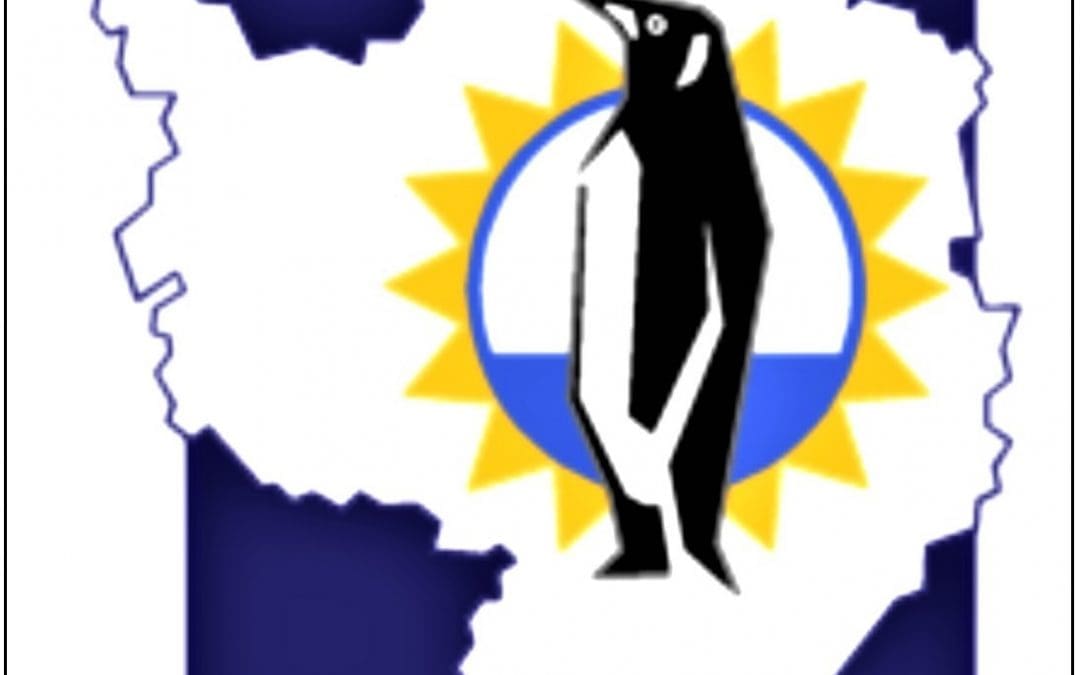
 South African Polar Research Infrastructure (SAPRI): Launch of the Preparatory Phase
South African Polar Research Infrastructure (SAPRI): Launch of the Preparatory Phase
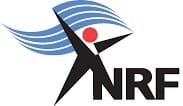 The SAPRI team is pleased to inform you that the contractual agreement for the starting of the SAPRI implementation phase is being finalized between the Department of Science and Innovation (DSI) and National Research Foundation of South Africa (NRF). We have now entered the Preparatory Phase of SAPRI’s operationalisation and interim measures are being put in place to ensure progress is made. Until the formal signature of the contract, the SAPRI cannot officially initiate Phase 1, but in the interim the Preparatory Phase will continue the conceptual design of the RI and predispose priority actions with the support of the community.
The SAPRI team is pleased to inform you that the contractual agreement for the starting of the SAPRI implementation phase is being finalized between the Department of Science and Innovation (DSI) and National Research Foundation of South Africa (NRF). We have now entered the Preparatory Phase of SAPRI’s operationalisation and interim measures are being put in place to ensure progress is made. Until the formal signature of the contract, the SAPRI cannot officially initiate Phase 1, but in the interim the Preparatory Phase will continue the conceptual design of the RI and predispose priority actions with the support of the community. 
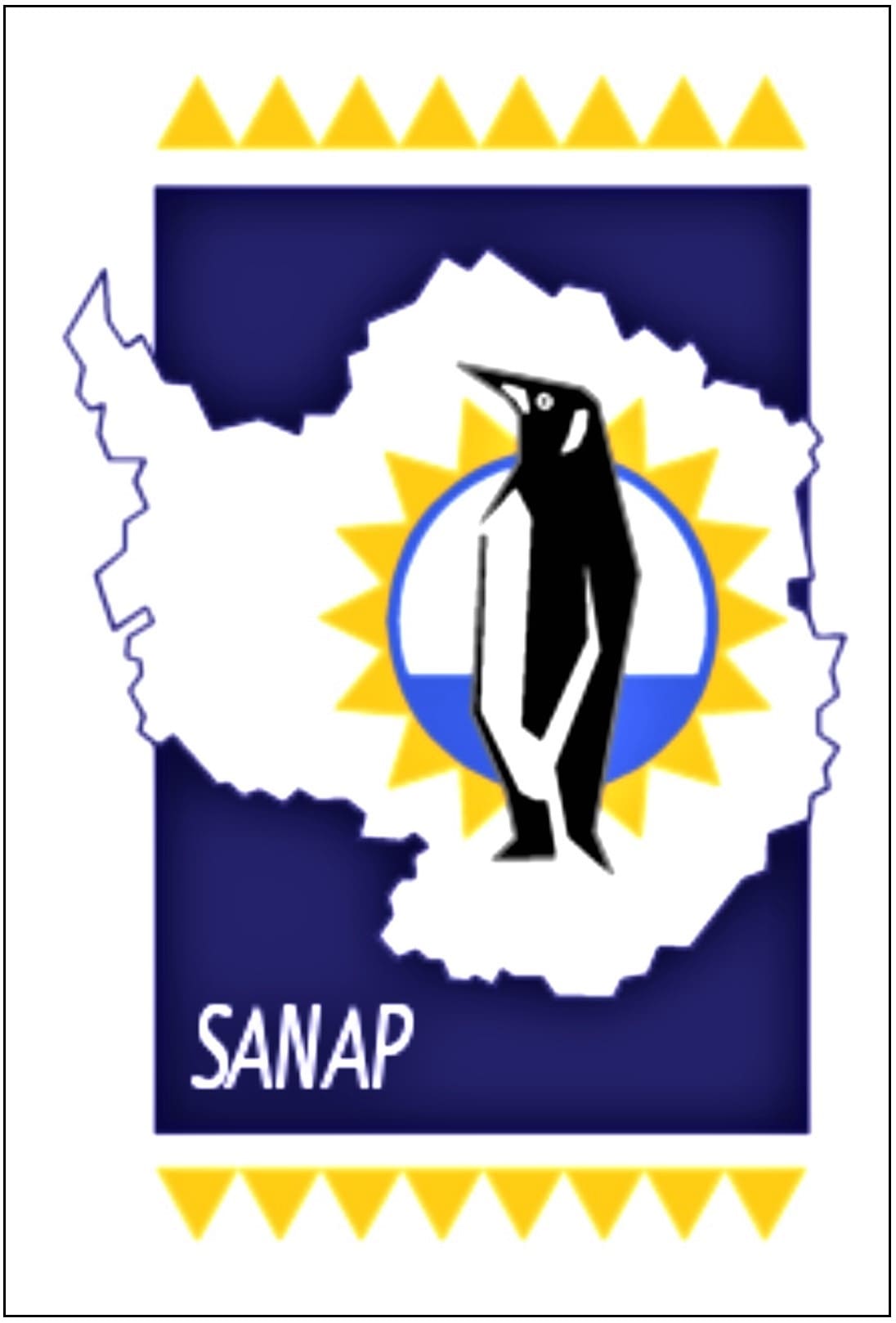 These achievements would not have been possible without the trust demonstrated by the scientific SANAP community towards the SAPRI team, the contribution and constructive support of the DFFE Oceans & Coasts Branch managing the SANAP logistics, and the commitment to collaborate offered by other institutions that have historically been involved in polar research. This gestation and birth of SAPRI is a major advancement to streamline, consolidate and grow the South African polar sciences, and represent a systemic innovation to maximize the investments of the various governmental institutions involved. The SAPRI will officially start from the advantageous position of being incubated within South African Environmental Observation Network (SAEON), which will fast-track the establishment of the governance and of the consortium agreements.
These achievements would not have been possible without the trust demonstrated by the scientific SANAP community towards the SAPRI team, the contribution and constructive support of the DFFE Oceans & Coasts Branch managing the SANAP logistics, and the commitment to collaborate offered by other institutions that have historically been involved in polar research. This gestation and birth of SAPRI is a major advancement to streamline, consolidate and grow the South African polar sciences, and represent a systemic innovation to maximize the investments of the various governmental institutions involved. The SAPRI will officially start from the advantageous position of being incubated within South African Environmental Observation Network (SAEON), which will fast-track the establishment of the governance and of the consortium agreements.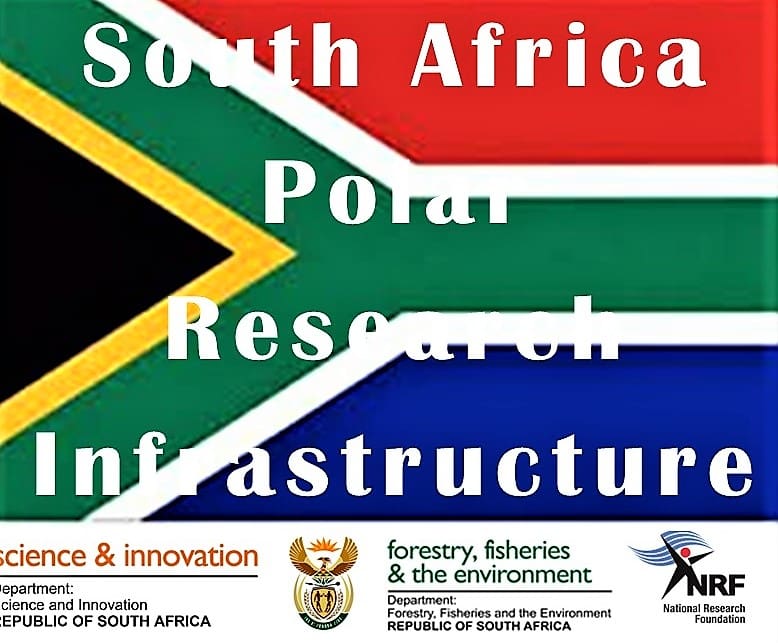 The launch of the SAPRI Preparatory Phase was announced via a webinar and a Q&A session to illustrate the main aspects of SAPRI, its organization into integrated facilities, and the first steps of the implementation phase listed in the business plan. To accelerate the implementation phase, it is proposed to initiate an informal Preparatory Phase of SAPRI and to discuss the following actions with the community of stakeholders:
The launch of the SAPRI Preparatory Phase was announced via a webinar and a Q&A session to illustrate the main aspects of SAPRI, its organization into integrated facilities, and the first steps of the implementation phase listed in the business plan. To accelerate the implementation phase, it is proposed to initiate an informal Preparatory Phase of SAPRI and to discuss the following actions with the community of stakeholders: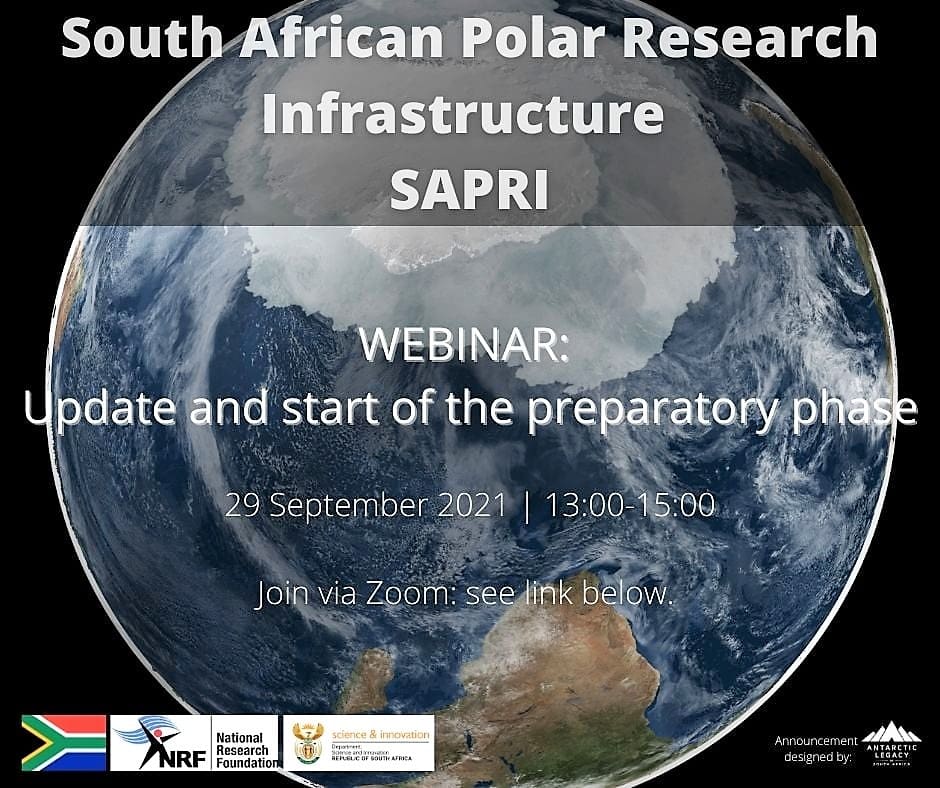 The virtual webinar took place on 29th September 13:00-15:00 and was led by the SAPRI team; Tamaryn Morris, Marcello Vichi, Juliet Hermes, Johannes Pauw.
The virtual webinar took place on 29th September 13:00-15:00 and was led by the SAPRI team; Tamaryn Morris, Marcello Vichi, Juliet Hermes, Johannes Pauw.

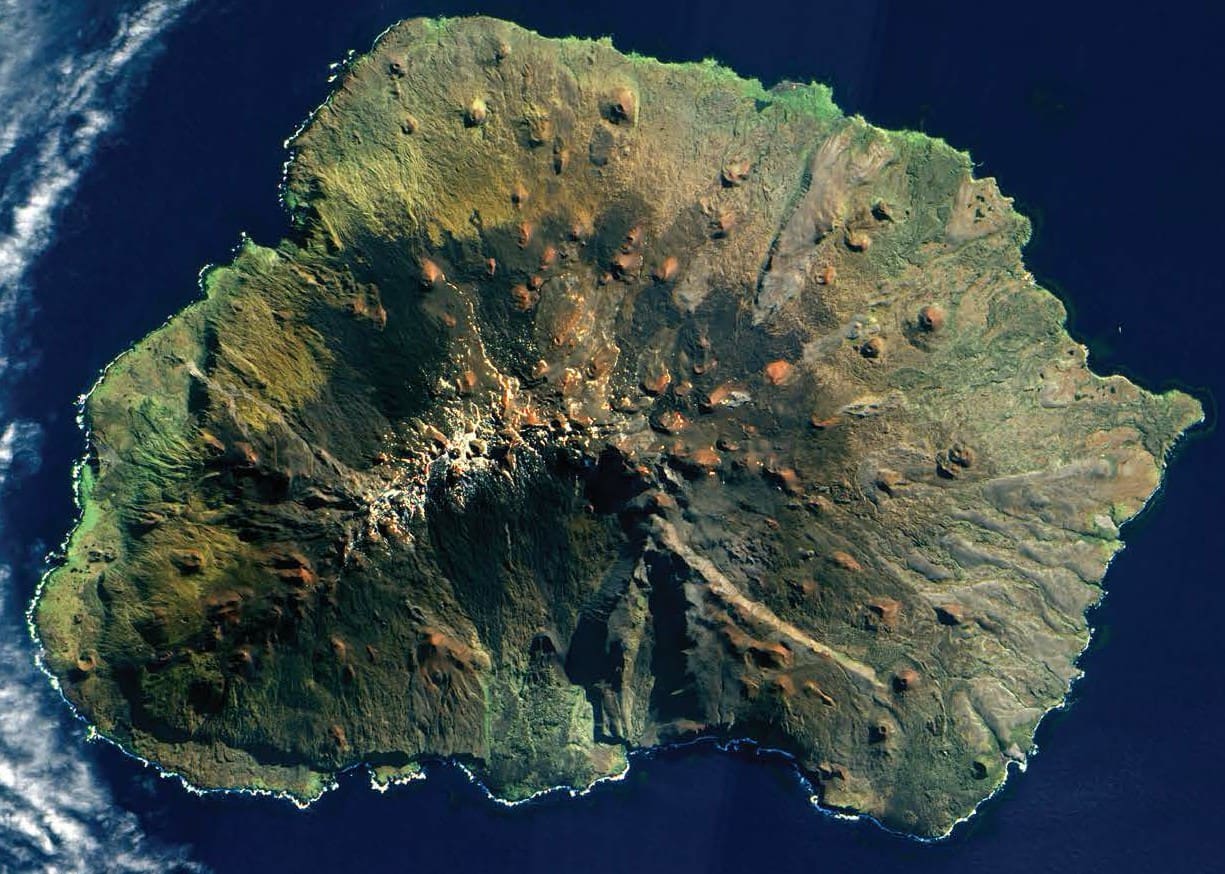
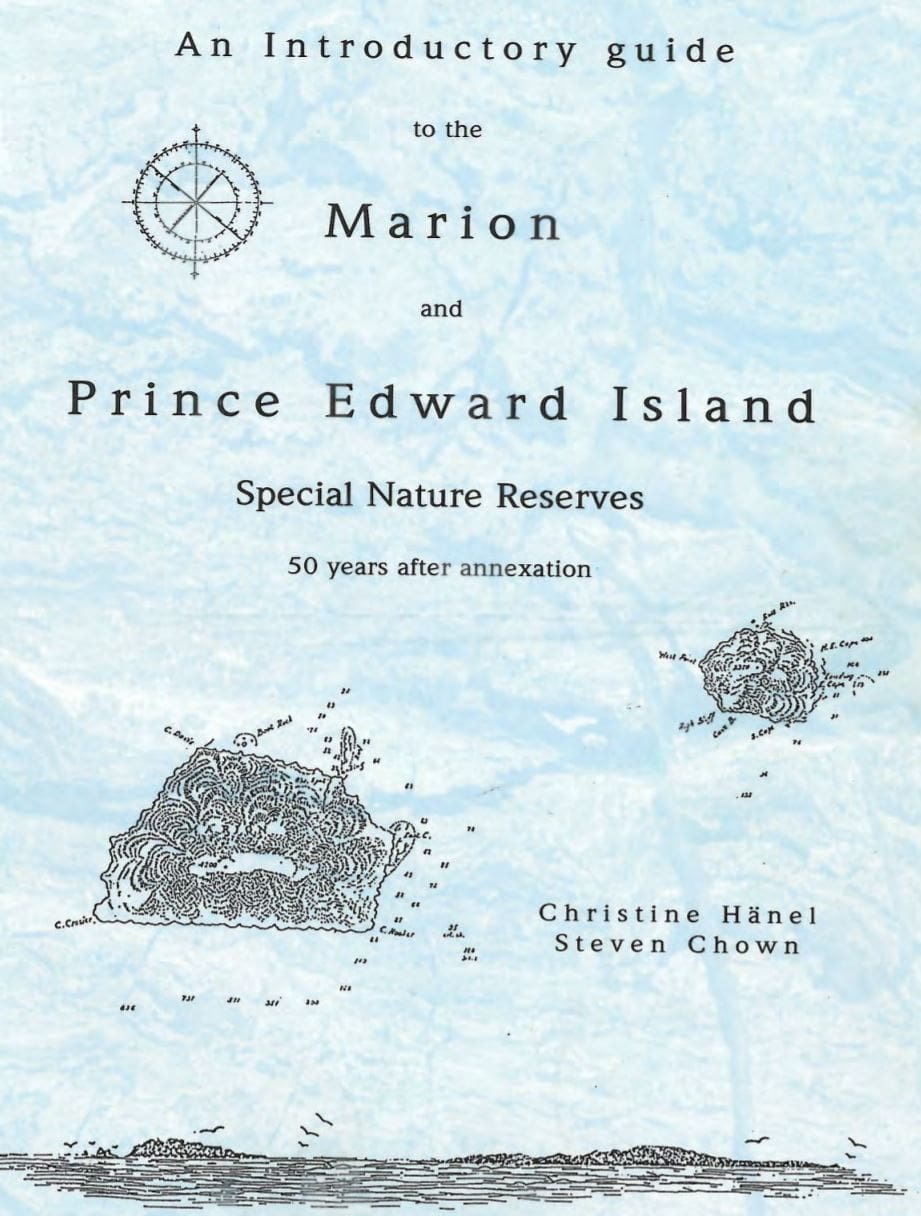 This is particularly obvious in the Southern Ocean where a warmer and dryer environment allows the proliferation of species once limited by the cold climate. South African
This is particularly obvious in the Southern Ocean where a warmer and dryer environment allows the proliferation of species once limited by the cold climate. South African 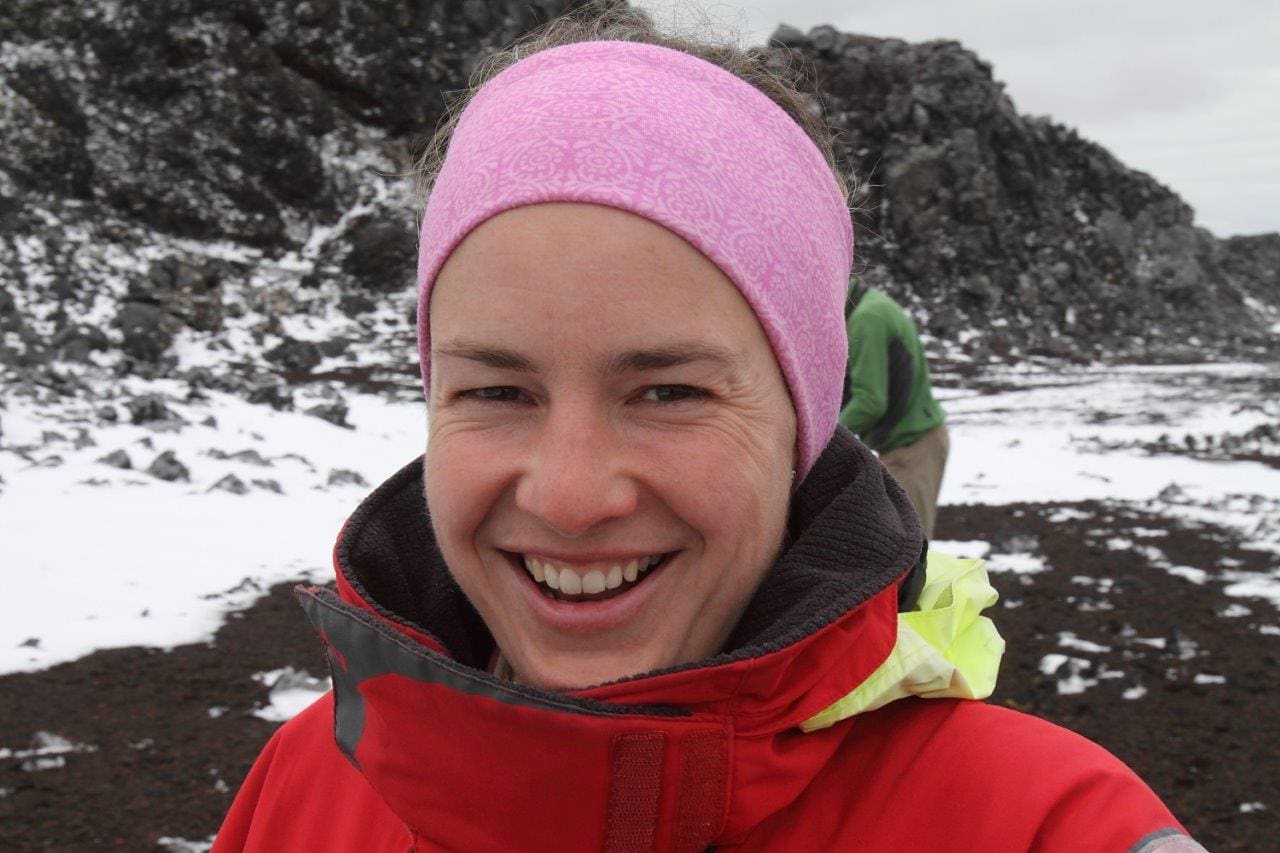
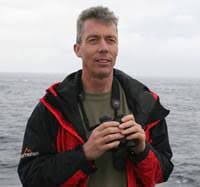 For the next three years, the new SANAP project co-led by Dr Maëlle Connan (Research Fellow in the
For the next three years, the new SANAP project co-led by Dr Maëlle Connan (Research Fellow in the 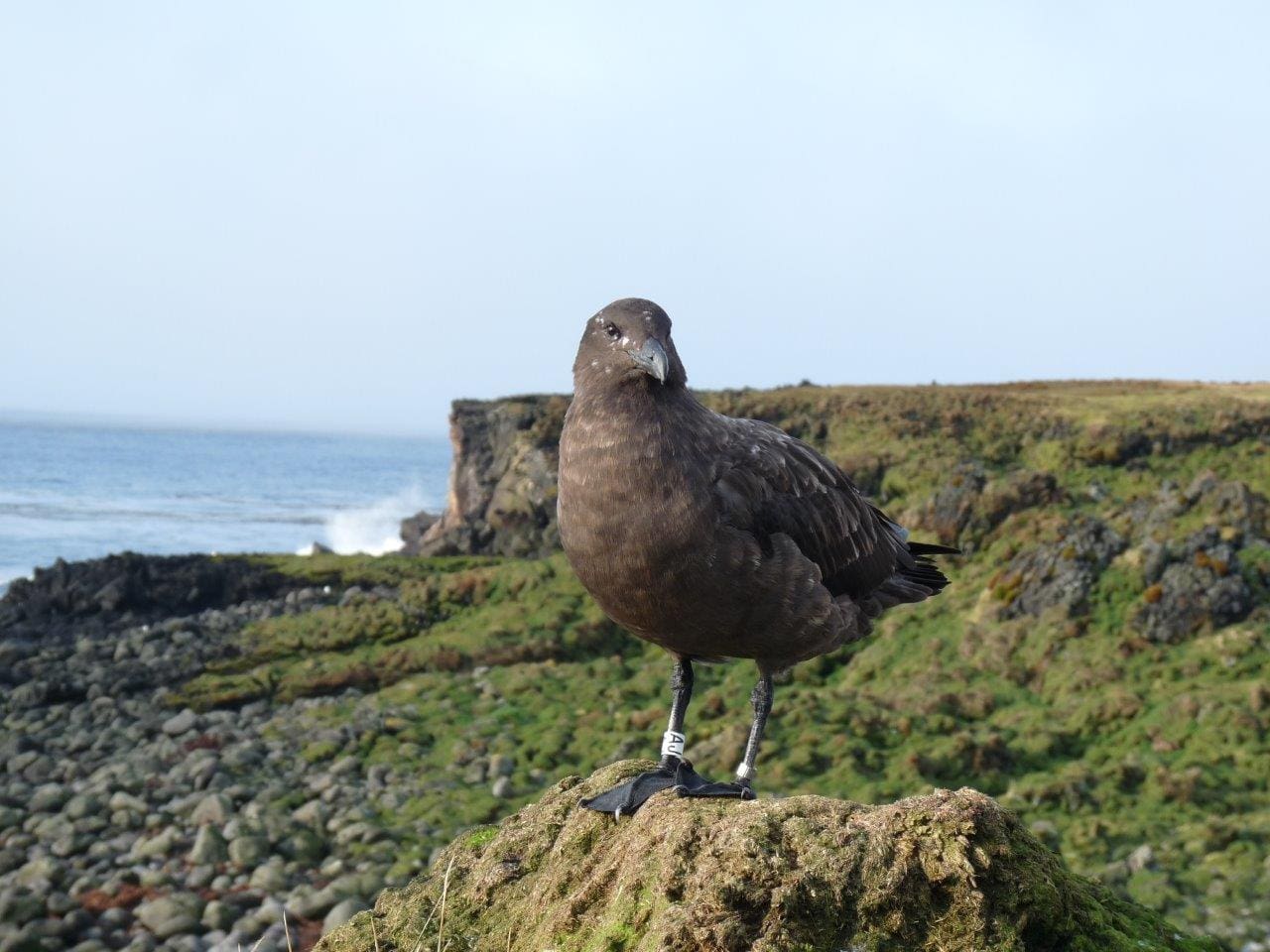
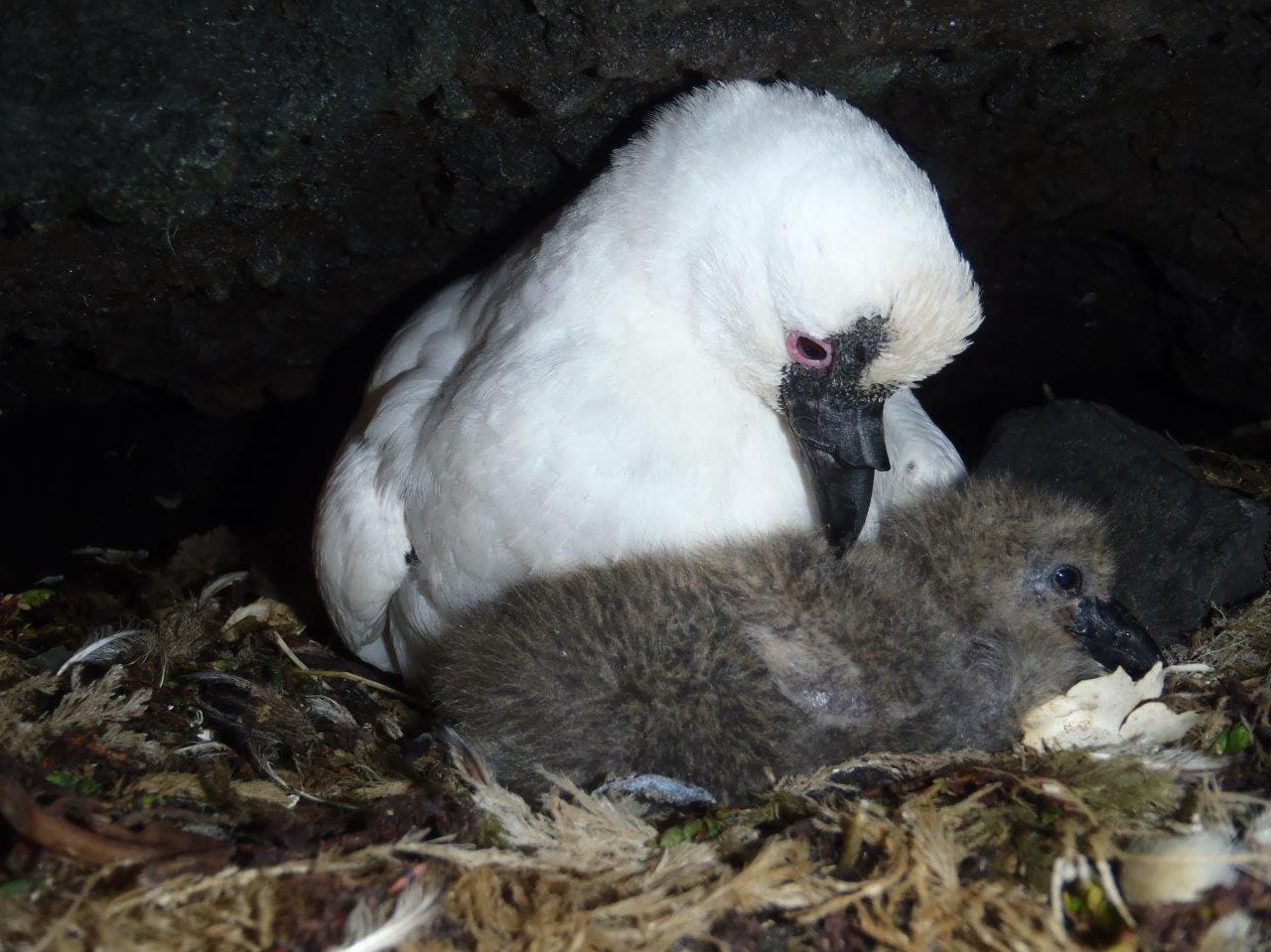 (Above l-r: Sub-Antarctic Skua, Black-Faced Sheathbill)
(Above l-r: Sub-Antarctic Skua, Black-Faced Sheathbill)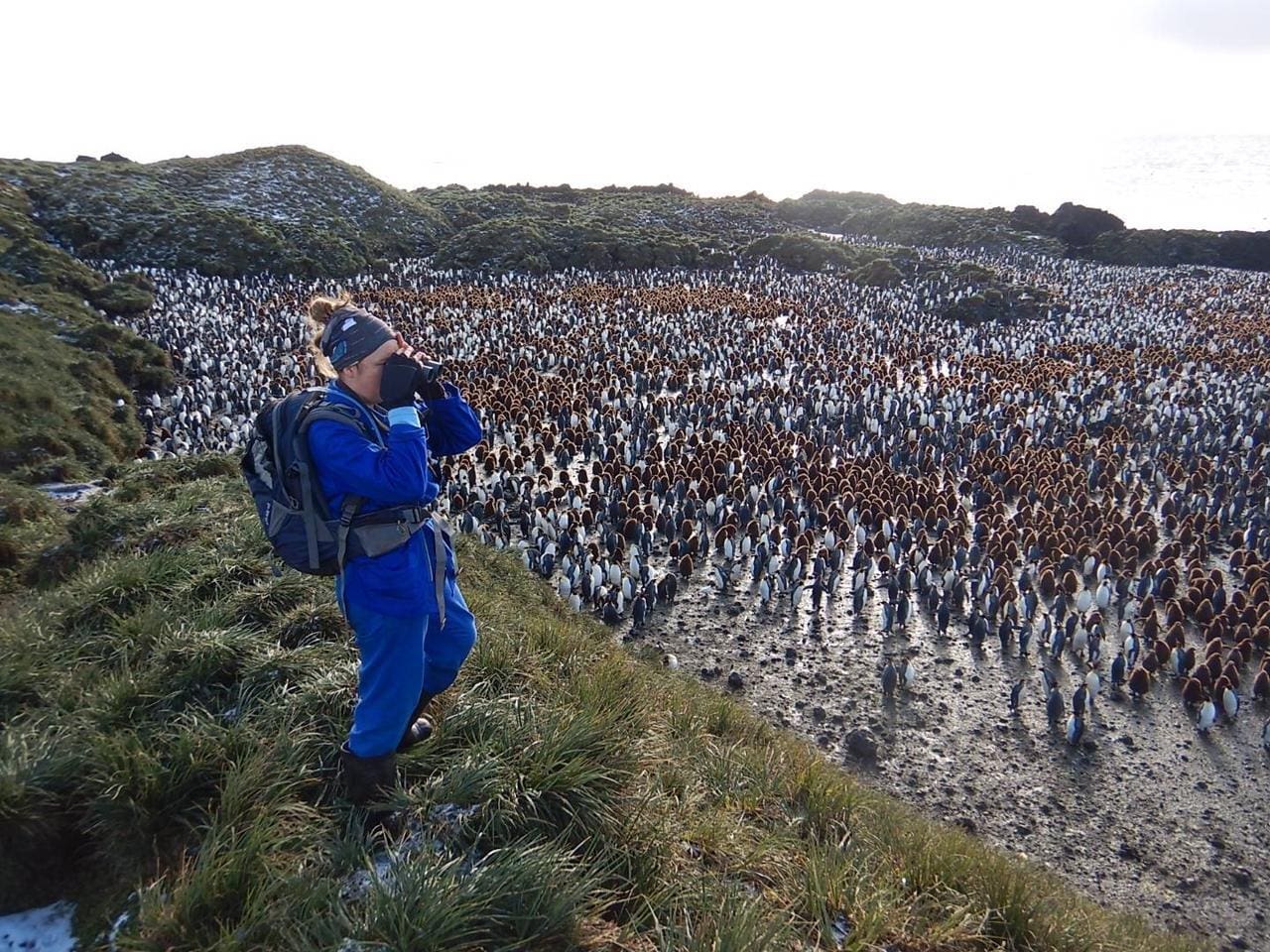
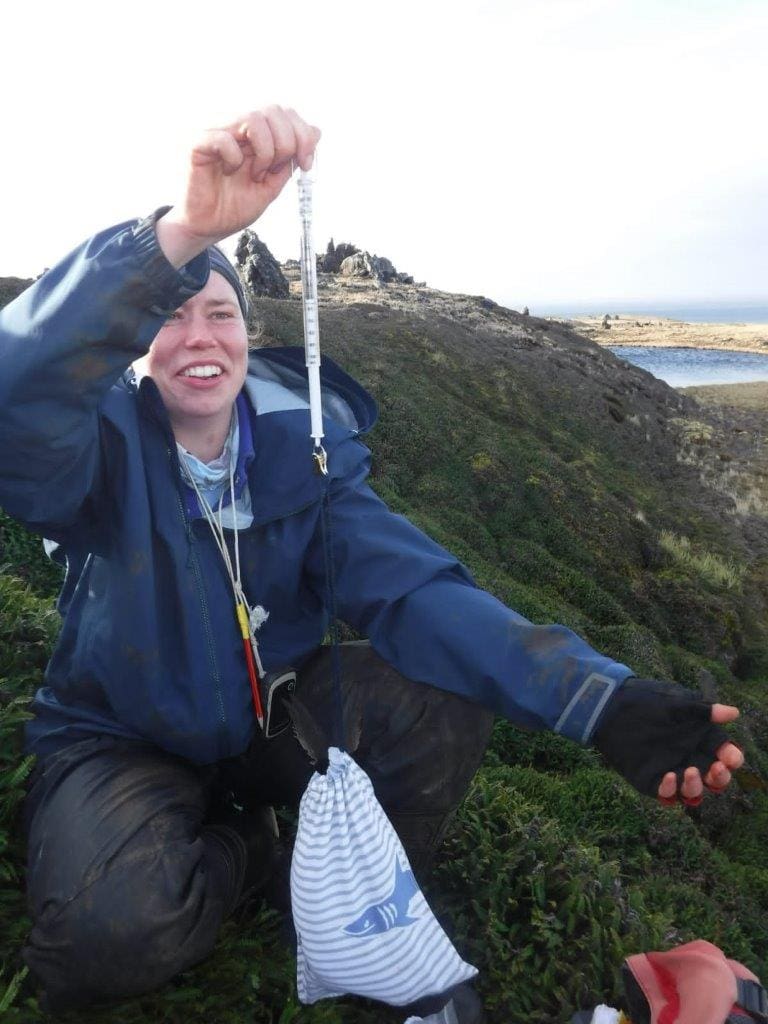 On one hand, Black-faced Sheathbills and Kelp Gulls used to predate on terrestrial invertebrates, at least seasonally, but this behaviour has decreased in sheathbills as invertebrate populations have collapsed through mouse predation. There are no recent data for Kelp Gulls. On the other hand, many pairs of Brown Skuas predate mainly on burrowing petrels, thus will inform on the recovery of these nocturnal species from mouse predation. The skua data will be complemented by the implementation of an automated acoustic monitoring to detect the presence and coarse distribution of the most elusive and cryptic nocturnal species which are notoriously difficult to study. (Left – Eleanor Weideman in the field on Marion Island.)
On one hand, Black-faced Sheathbills and Kelp Gulls used to predate on terrestrial invertebrates, at least seasonally, but this behaviour has decreased in sheathbills as invertebrate populations have collapsed through mouse predation. There are no recent data for Kelp Gulls. On the other hand, many pairs of Brown Skuas predate mainly on burrowing petrels, thus will inform on the recovery of these nocturnal species from mouse predation. The skua data will be complemented by the implementation of an automated acoustic monitoring to detect the presence and coarse distribution of the most elusive and cryptic nocturnal species which are notoriously difficult to study. (Left – Eleanor Weideman in the field on Marion Island.) Cover Image: Sub-Antarctic Skua – photo credit: Maelle Connan
Cover Image: Sub-Antarctic Skua – photo credit: Maelle Connan


 (Above left to right: temperature-depth profiles with time data of artificially grown sea ice, crystal structure of artificially grown sea ice, comparison of the Elastic Modulus of different types of sea ice)
(Above left to right: temperature-depth profiles with time data of artificially grown sea ice, crystal structure of artificially grown sea ice, comparison of the Elastic Modulus of different types of sea ice) (Above: left picture (UCT MARiS Mobile polar lab), Middle picture (Miss B. Matlakala and Mr F. Guni doing artificial sea ice experiments), Right Picture (Compression machine for testing mechanical properties of sea ice).
(Above: left picture (UCT MARiS Mobile polar lab), Middle picture (Miss B. Matlakala and Mr F. Guni doing artificial sea ice experiments), Right Picture (Compression machine for testing mechanical properties of sea ice).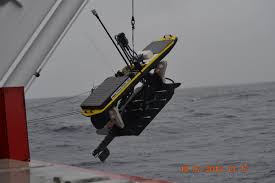 (Above left to right: Dr Tokoloho Rampai and A/Prof Marcello Vichi) Dr Tokoloho Rampai (chemical engineering department) is the principal investigator on the project, with the co-investigator A/Prof Marcello Vichi from the department of Oceanography.
(Above left to right: Dr Tokoloho Rampai and A/Prof Marcello Vichi) Dr Tokoloho Rampai (chemical engineering department) is the principal investigator on the project, with the co-investigator A/Prof Marcello Vichi from the department of Oceanography.

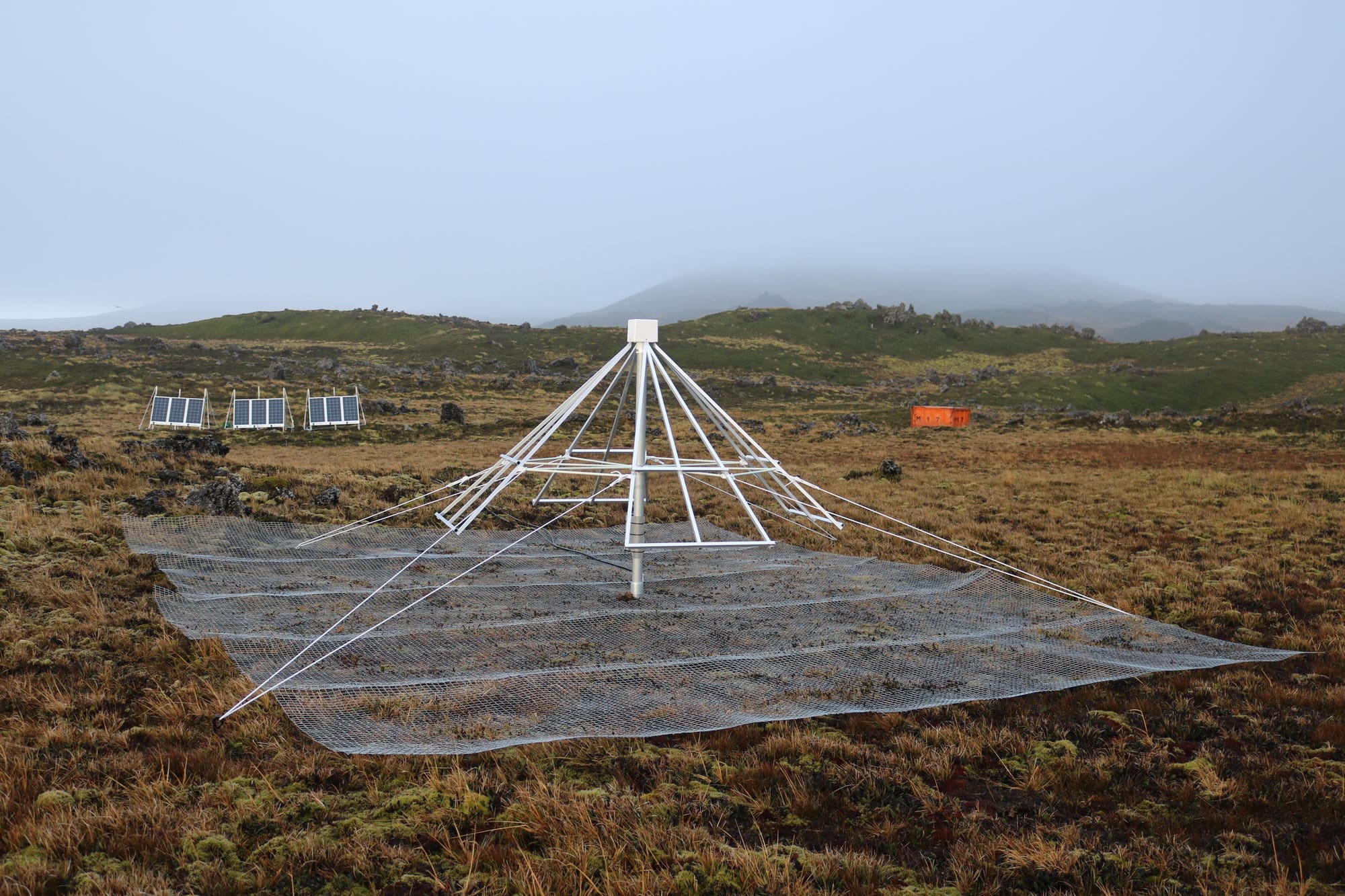

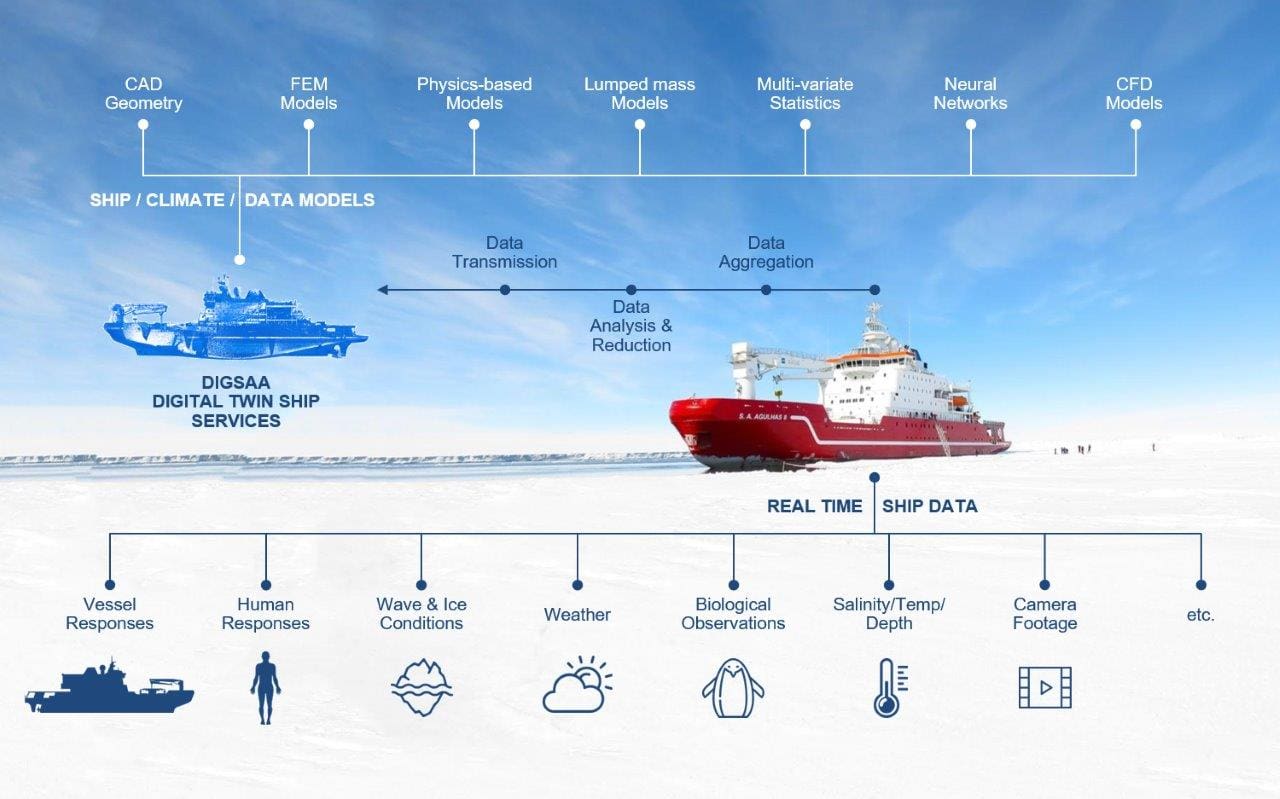 Industry 4.0 is the digital transformation of global industry. Digital twins pose to disrupt conventional business as they harness real-time data alongside a digitized representation of the state and behaviour of real assets to offer decision support. Sound and vibration research often entails multi-sensor measurements, signal processing and analytics providing an ideal training background to embrace the current innovation climate.
Industry 4.0 is the digital transformation of global industry. Digital twins pose to disrupt conventional business as they harness real-time data alongside a digitized representation of the state and behaviour of real assets to offer decision support. Sound and vibration research often entails multi-sensor measurements, signal processing and analytics providing an ideal training background to embrace the current innovation climate. Funding from the South African National Antarctic Programme, has boosted the group’s research to instigate the digital transformation of Africa’s only polar research vessel, the SA Agulhas II, to a “flagship for Vessel 4.0”. The full-scale measurement project – engineering measurements on the ship in operation – kicked off in 2012. SVRG collaborated in an international consortium including the Universities of Aalto and Oulo, Aker Arctic, Det Norske Veritas, Rolls Royce, Wärtsilä and STX Europe. The then, newly commissioned SA Agulhas II was put to the test during two days of ice-breaking operations in the Bay of Bothnia in Finland during ice-trails. Today, the SA Agulhas II is equipped with +200 engineering sensors to measure the ice and waves in the ship’s environment, the bending and twisting of her hull and the wellbeing of passengers.
Funding from the South African National Antarctic Programme, has boosted the group’s research to instigate the digital transformation of Africa’s only polar research vessel, the SA Agulhas II, to a “flagship for Vessel 4.0”. The full-scale measurement project – engineering measurements on the ship in operation – kicked off in 2012. SVRG collaborated in an international consortium including the Universities of Aalto and Oulo, Aker Arctic, Det Norske Veritas, Rolls Royce, Wärtsilä and STX Europe. The then, newly commissioned SA Agulhas II was put to the test during two days of ice-breaking operations in the Bay of Bothnia in Finland during ice-trails. Today, the SA Agulhas II is equipped with +200 engineering sensors to measure the ice and waves in the ship’s environment, the bending and twisting of her hull and the wellbeing of passengers.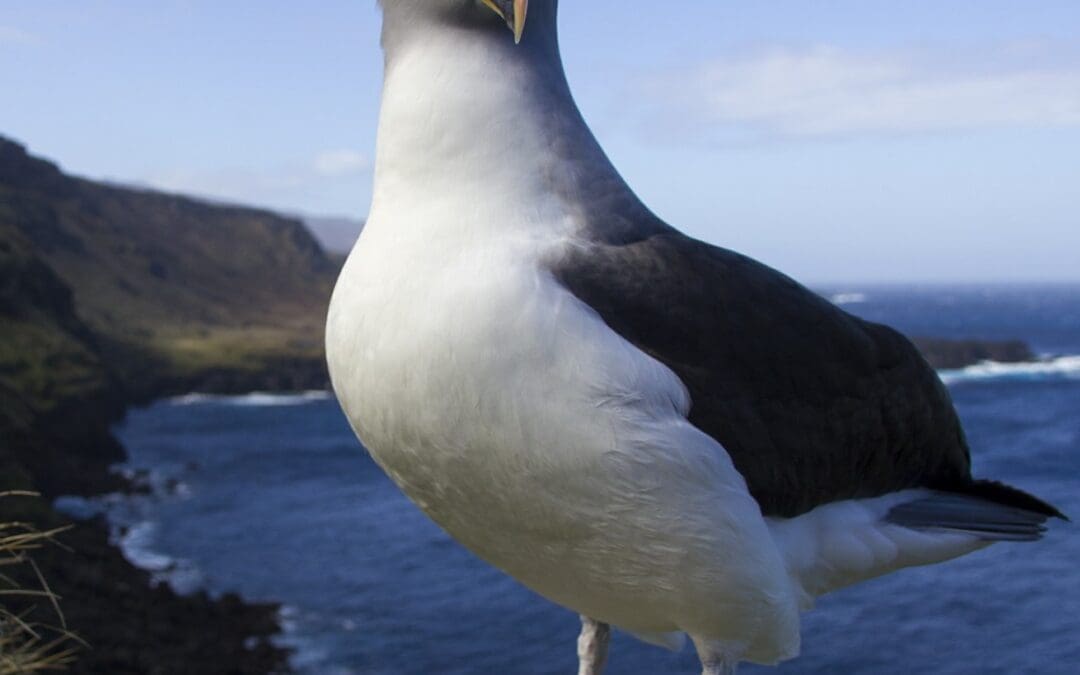
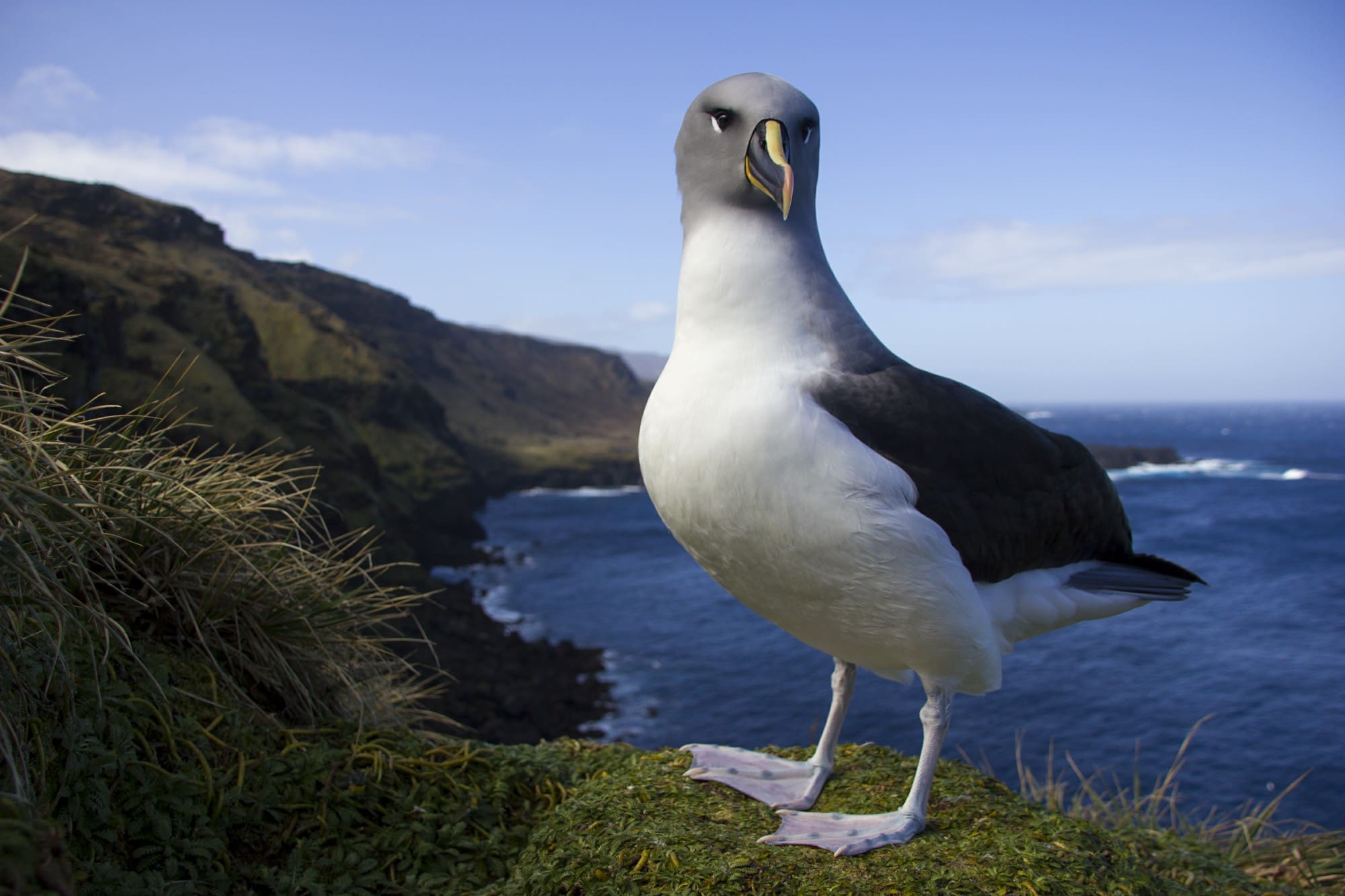
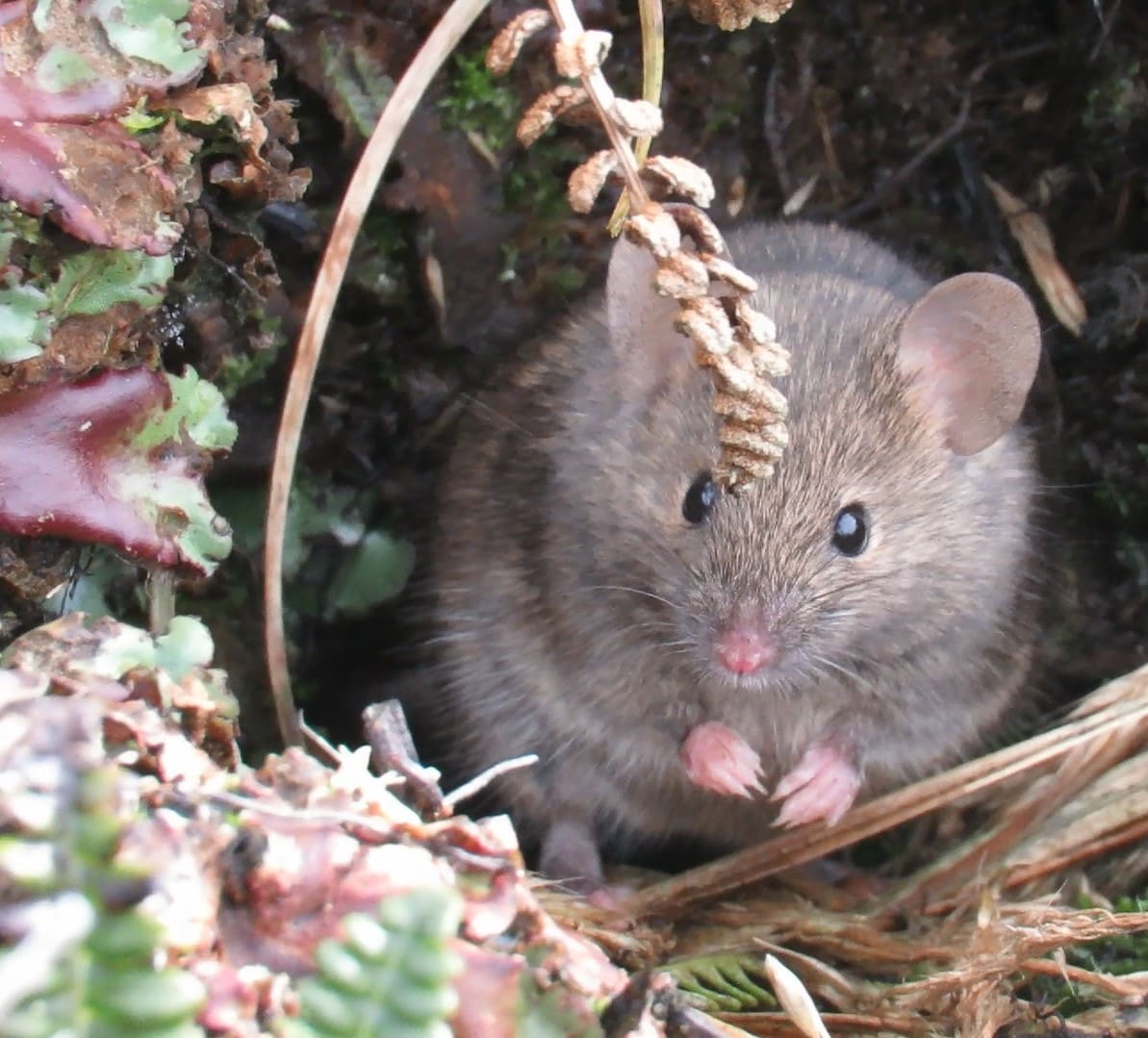
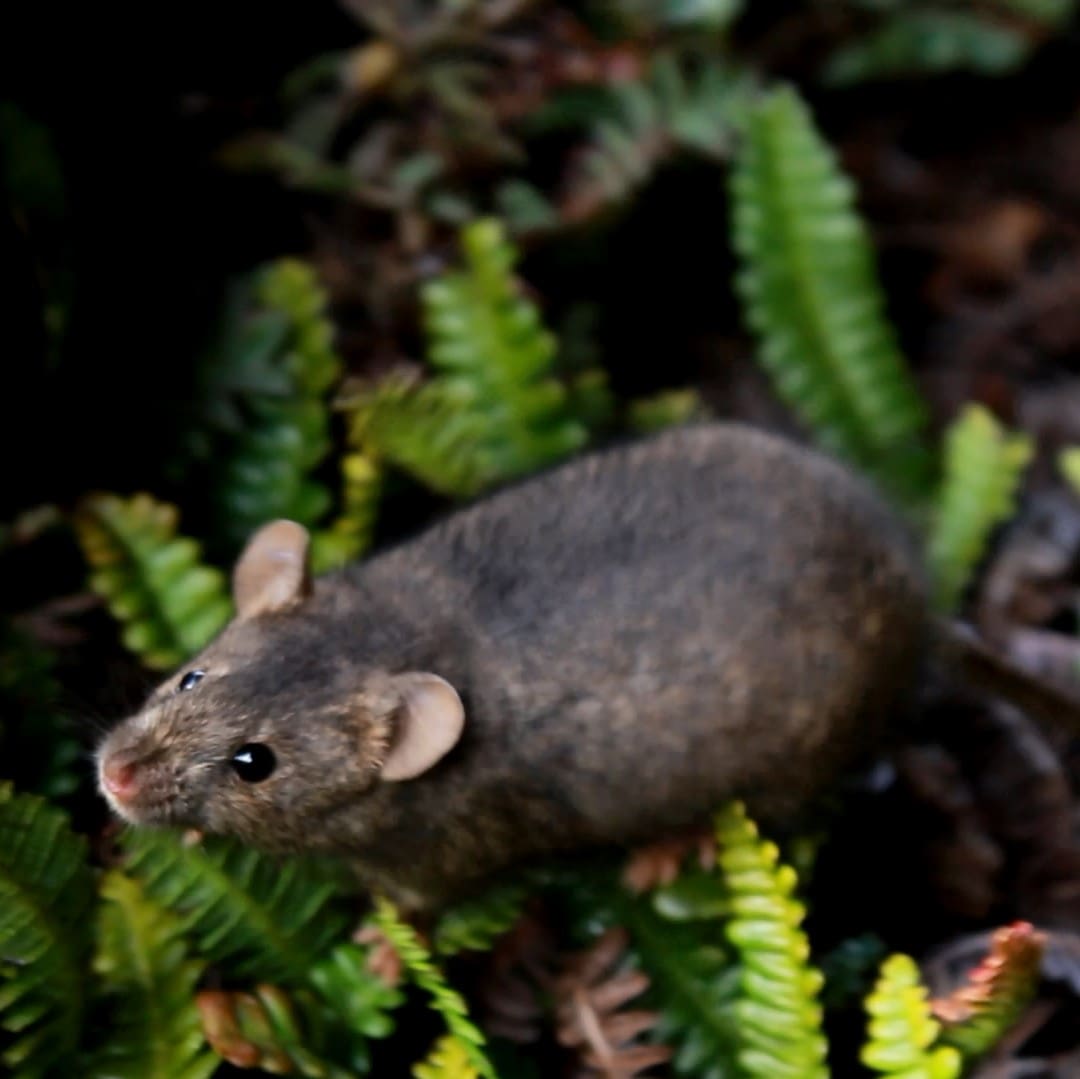
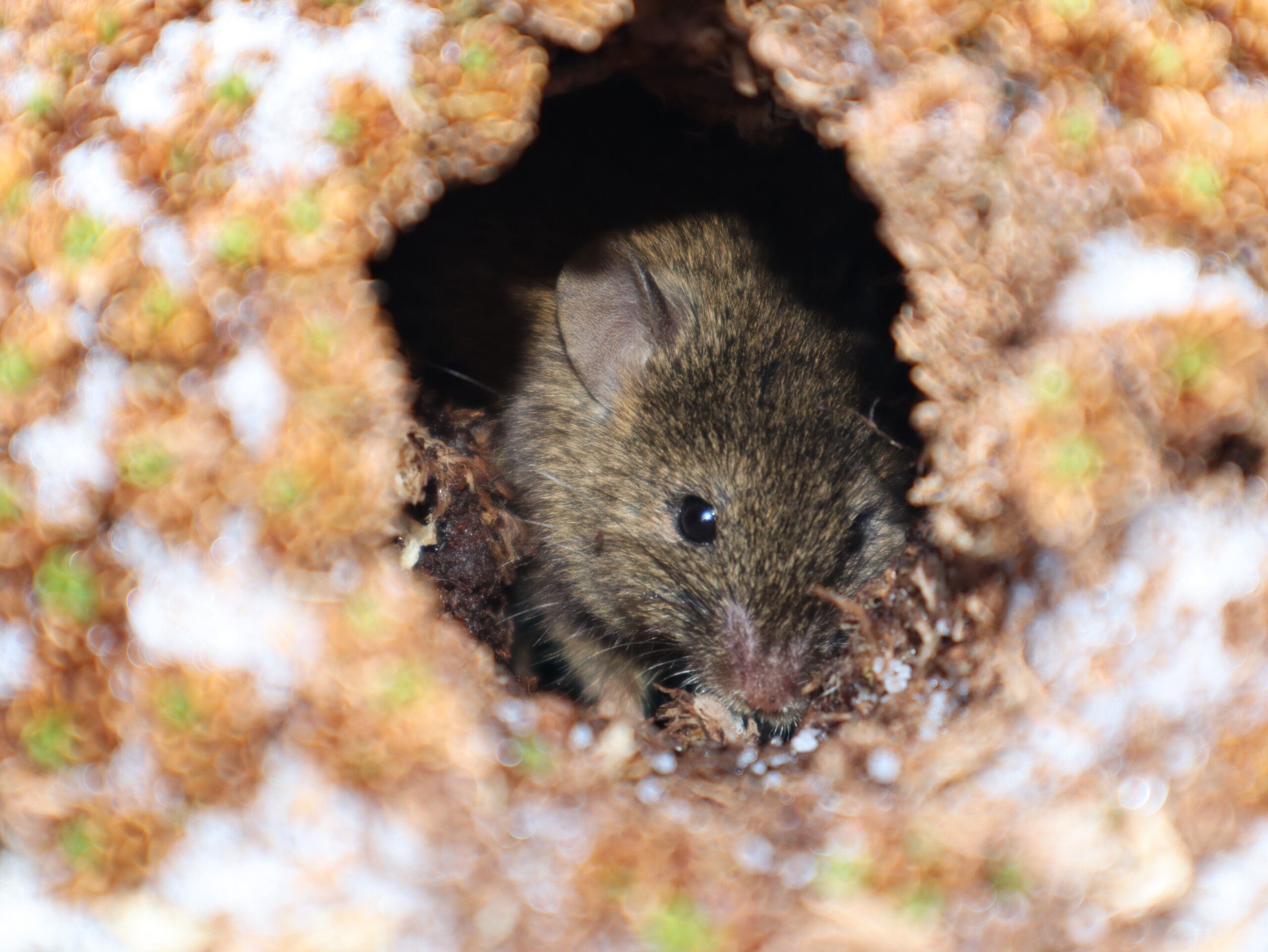 The House Mouse Mus musculus (Photo Credit: Stefan Schoombie), inadvertently introduced to Marion Island by sealers in the early 1800s, successfully established on the island. With the human occupation of the island in 1948, four cats were brought to the island to control the mice in and around the station. However, these cats bred on the island, with their offspring becoming feral, and by the 1970s the population had increased to about 2000 individuals that were killing some 450 000 birds per year, mostly chicks of burrow-nesting species.
The House Mouse Mus musculus (Photo Credit: Stefan Schoombie), inadvertently introduced to Marion Island by sealers in the early 1800s, successfully established on the island. With the human occupation of the island in 1948, four cats were brought to the island to control the mice in and around the station. However, these cats bred on the island, with their offspring becoming feral, and by the 1970s the population had increased to about 2000 individuals that were killing some 450 000 birds per year, mostly chicks of burrow-nesting species. 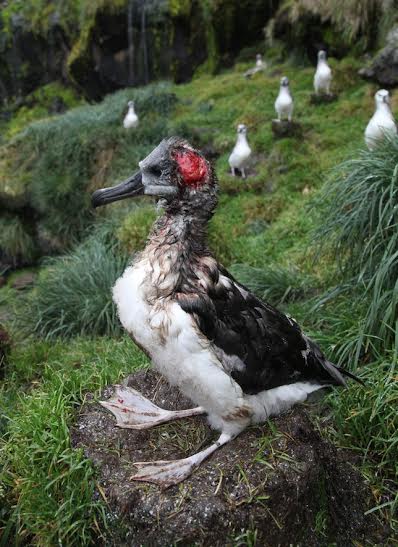 With South Africa’s successful eradication of the cats in 1991 (confirmed in 1992), until recently the largest island upon which this has been achieved, the mice continued to thrive and over the years have had devastating effects on Marion’s fragile ecosystem by negatively affecting invertebrate densities, impacting on the vegetation by consuming seed loads and preying upon the chicks of burrowing petrels (since the 1980s) and surface-breeding albatrosses (since 2003), with ‘scalpings’ occurring from 2009 and attacks on adult birds recorded more recently in 2019. (Image Credit: FitzPatrick Institute)
With South Africa’s successful eradication of the cats in 1991 (confirmed in 1992), until recently the largest island upon which this has been achieved, the mice continued to thrive and over the years have had devastating effects on Marion’s fragile ecosystem by negatively affecting invertebrate densities, impacting on the vegetation by consuming seed loads and preying upon the chicks of burrowing petrels (since the 1980s) and surface-breeding albatrosses (since 2003), with ‘scalpings’ occurring from 2009 and attacks on adult birds recorded more recently in 2019. (Image Credit: FitzPatrick Institute)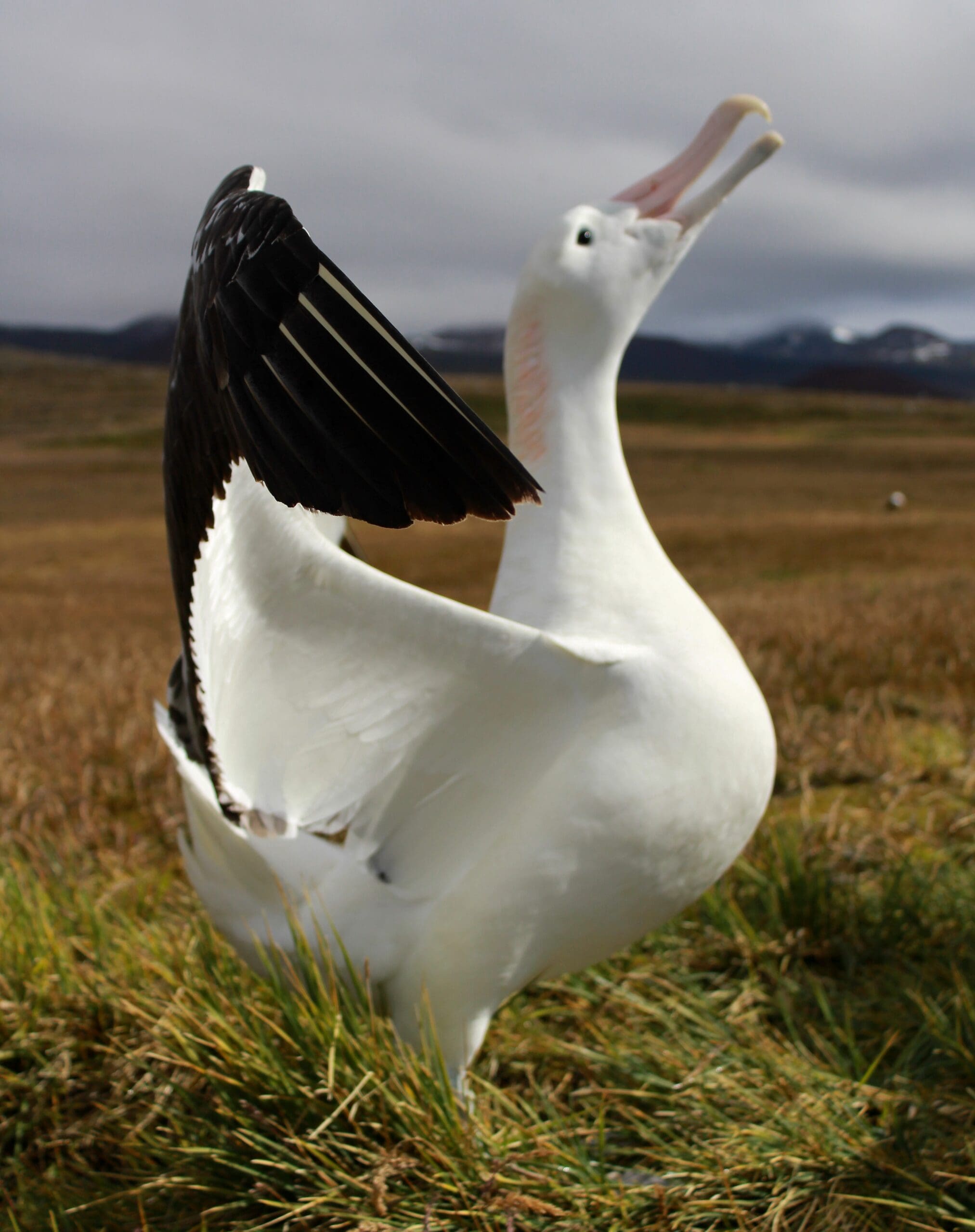


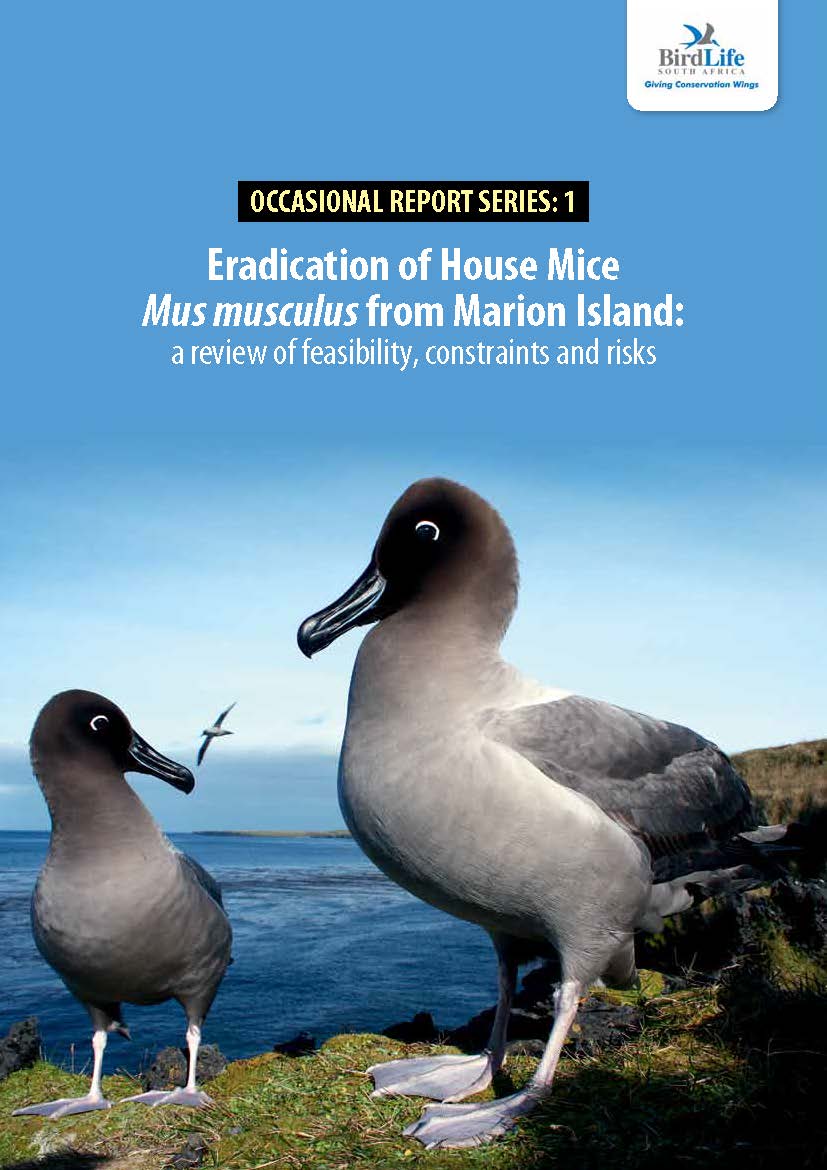 In what would later become a partnership with DFFE, a
In what would later become a partnership with DFFE, a 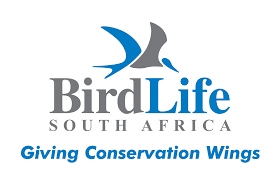
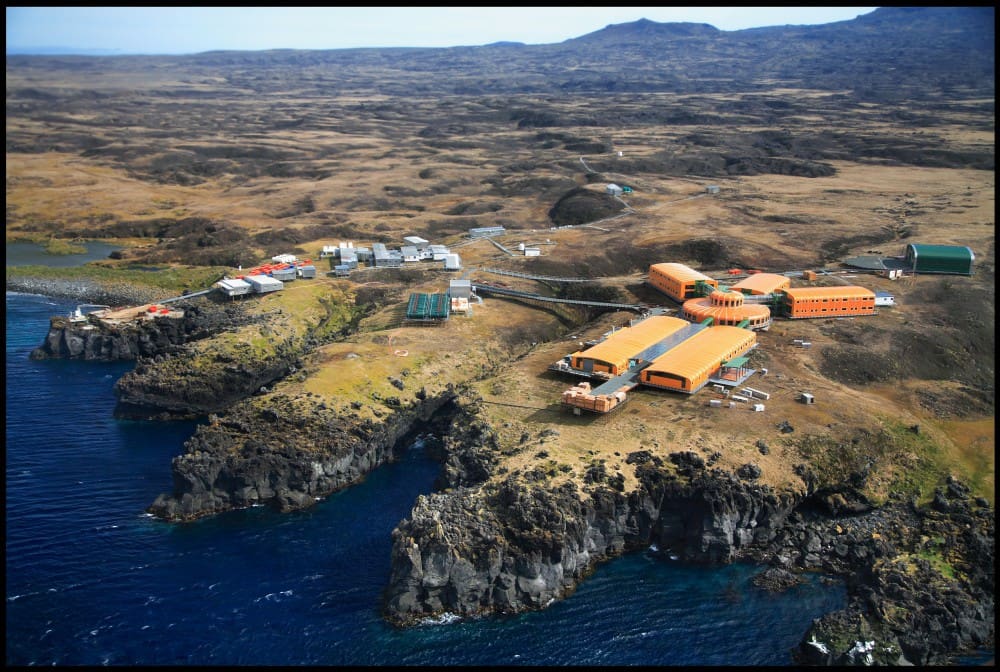 The systematic aerial sowing of bait will be conducted by GPS-guided helicopters with underslung bait buckets to ensure every single mouse territory is covered. The aerial baiting will be complemented by hand-baiting approaches in and around the
The systematic aerial sowing of bait will be conducted by GPS-guided helicopters with underslung bait buckets to ensure every single mouse territory is covered. The aerial baiting will be complemented by hand-baiting approaches in and around the 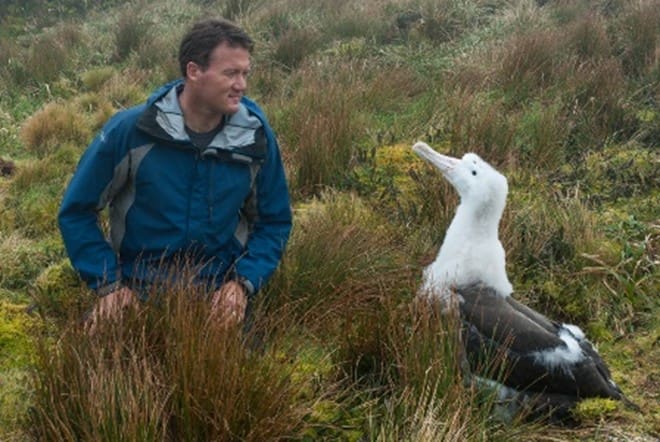
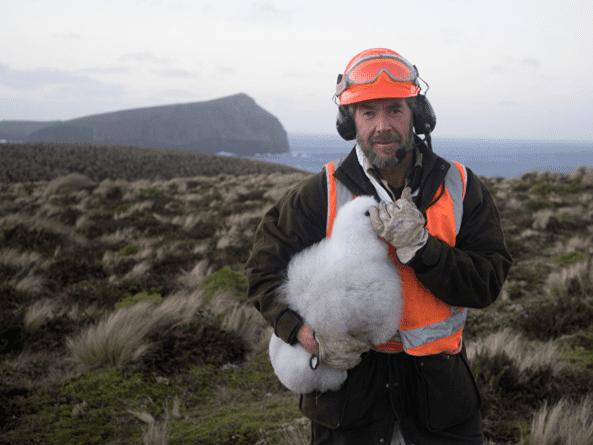
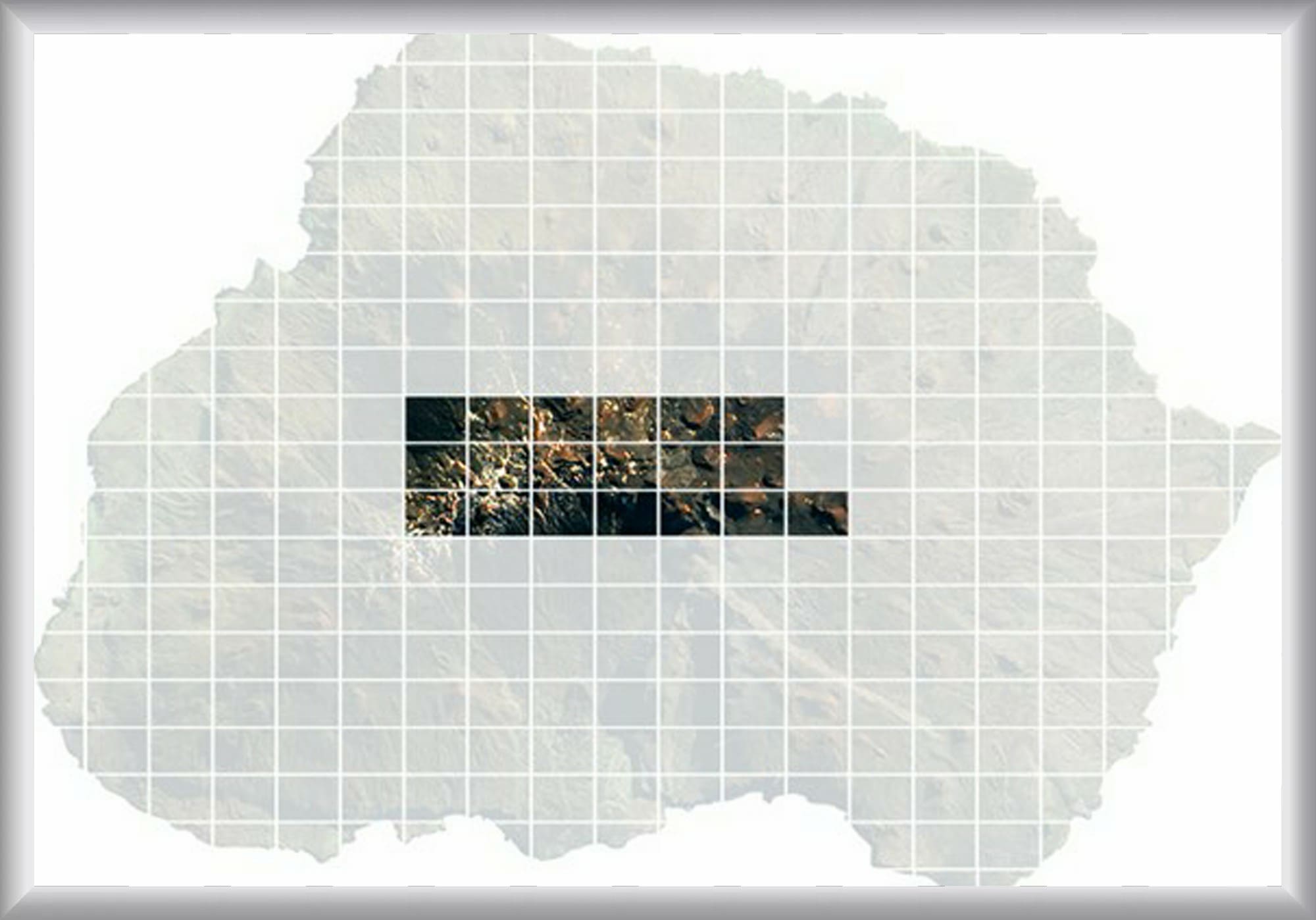 A project of this nature requires substantial funding. To date, funds provided and committed are comprised largely of donations, government funding and crowd sourcing to save Marion Island’s seabirds. For more information and the latest updates on the MFM Project, as well as to ‘
A project of this nature requires substantial funding. To date, funds provided and committed are comprised largely of donations, government funding and crowd sourcing to save Marion Island’s seabirds. For more information and the latest updates on the MFM Project, as well as to ‘




